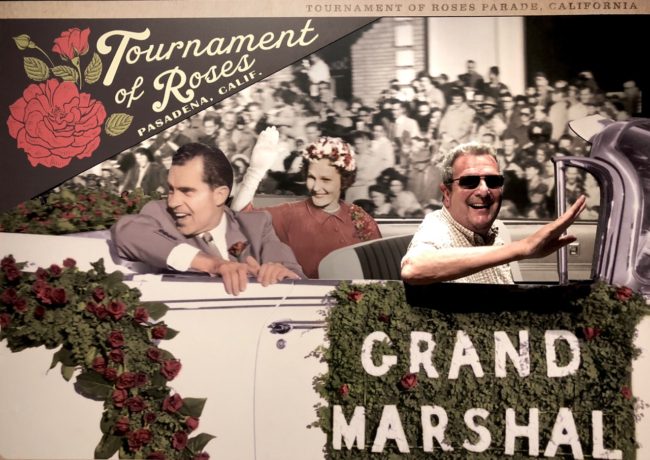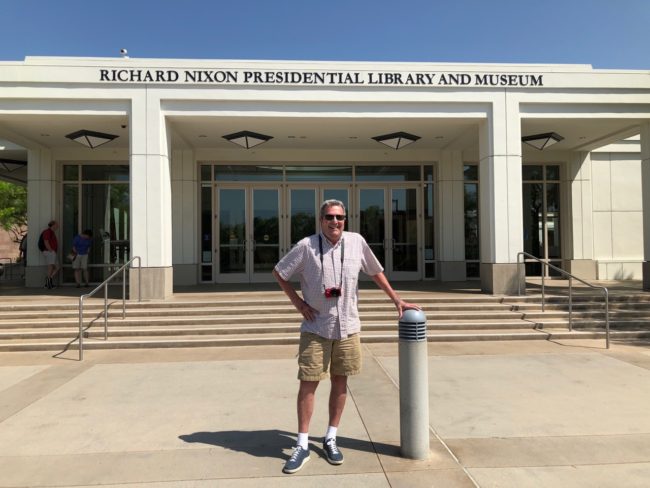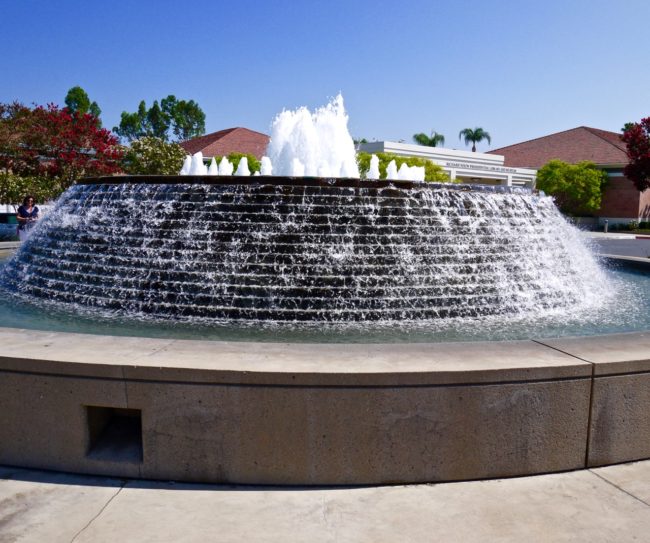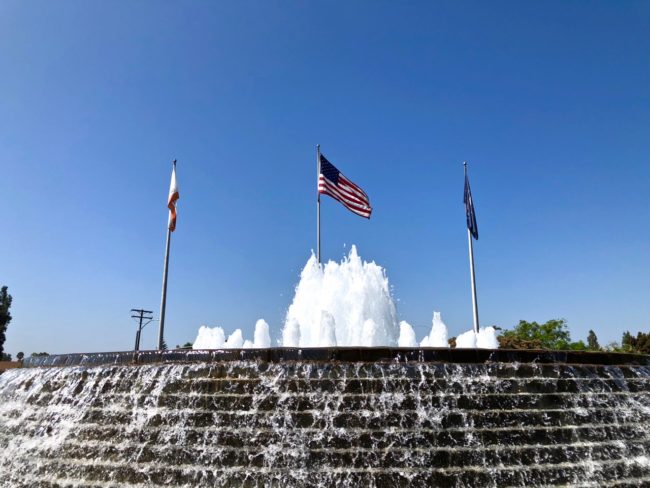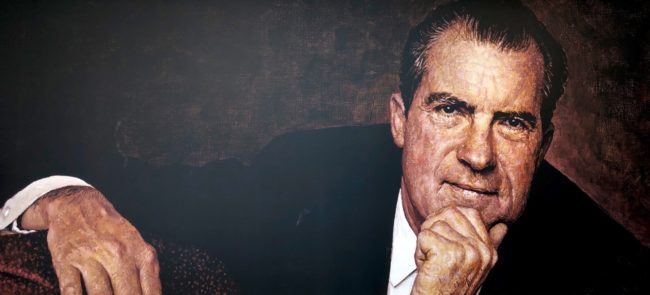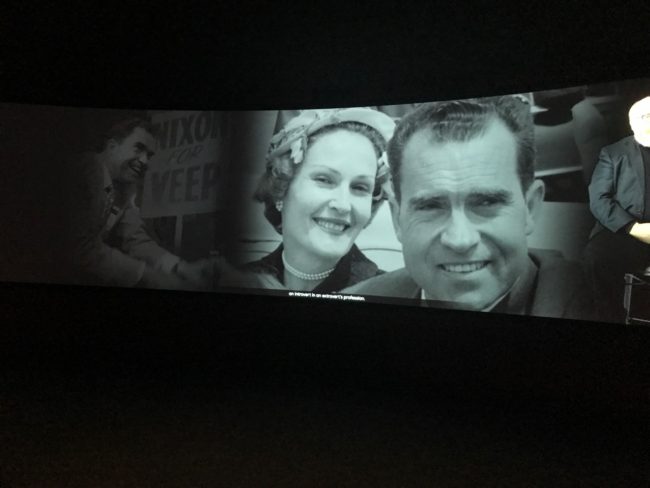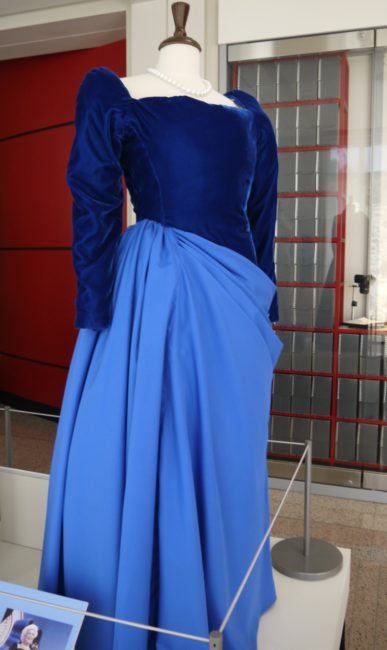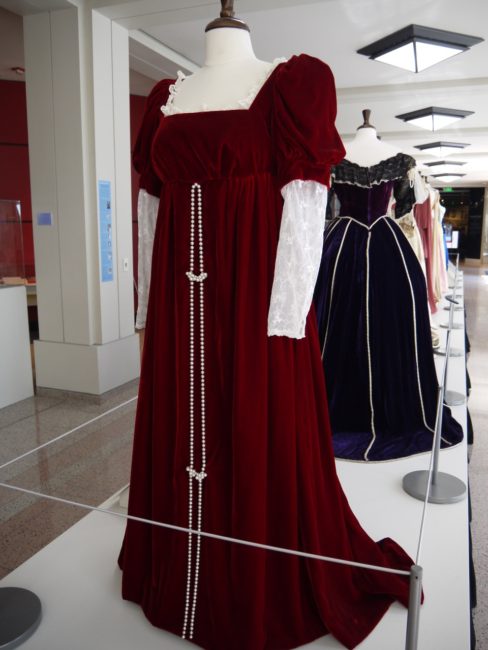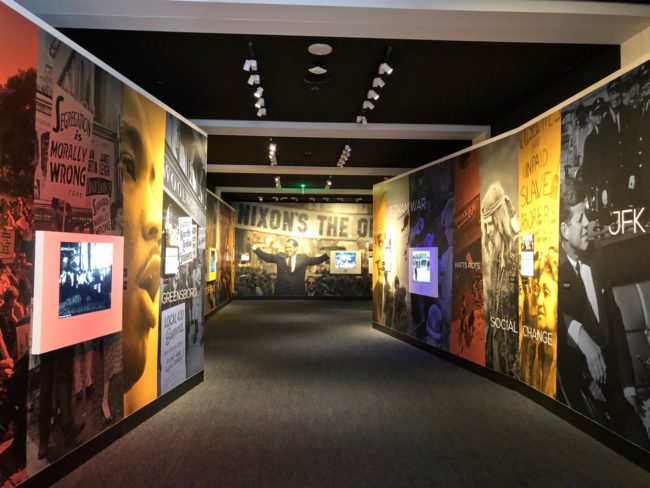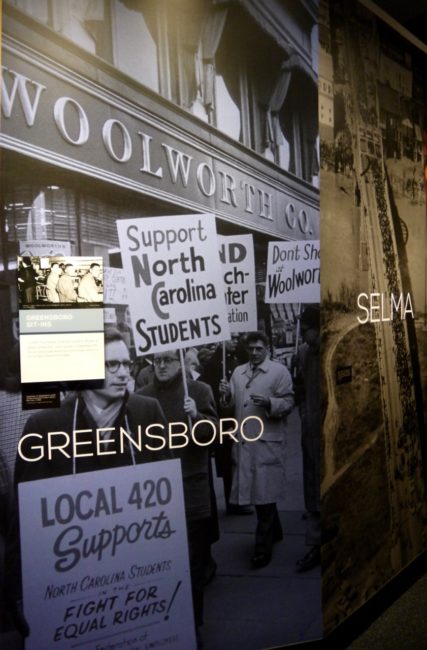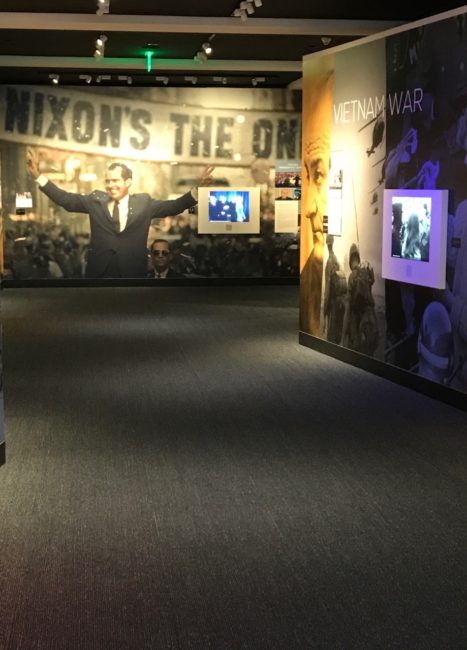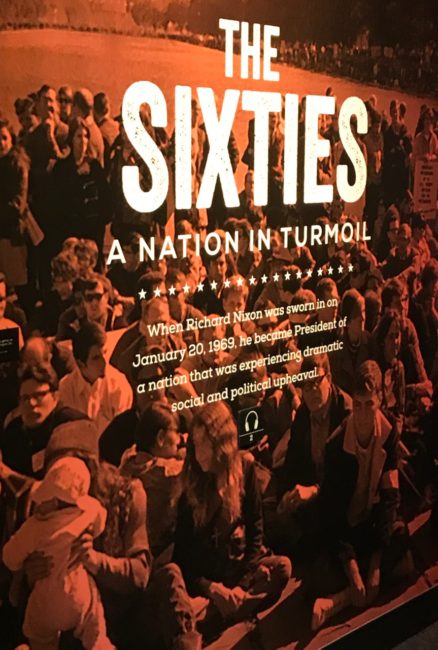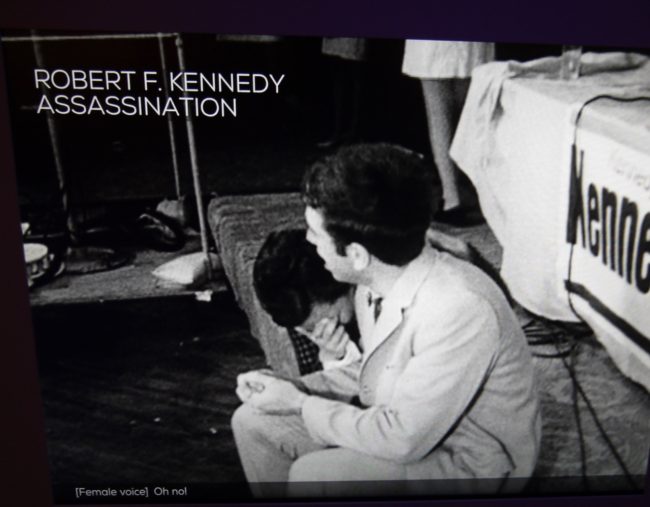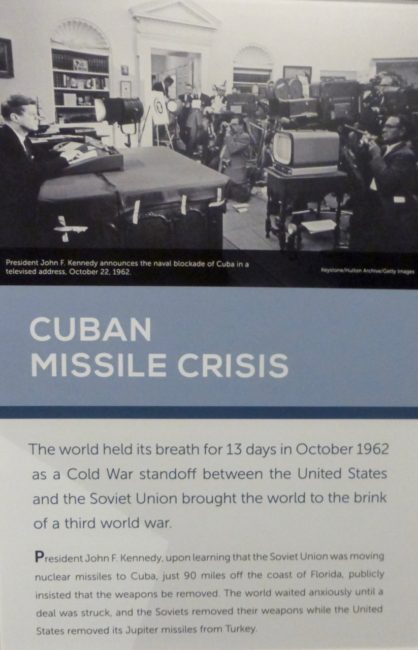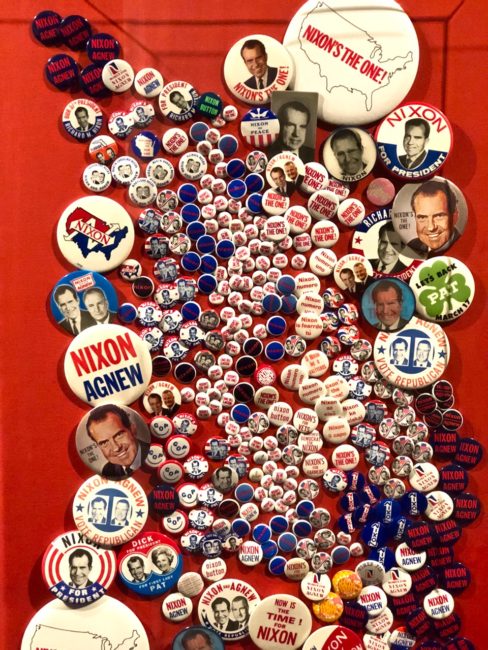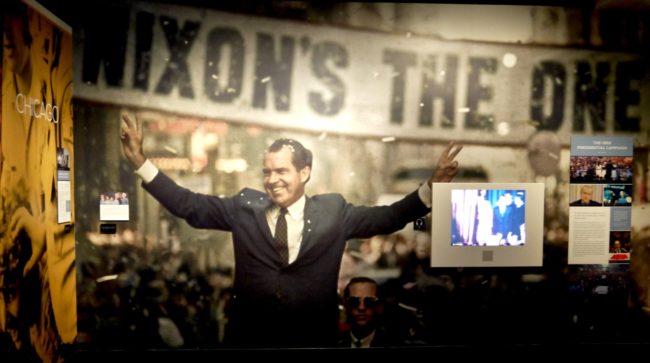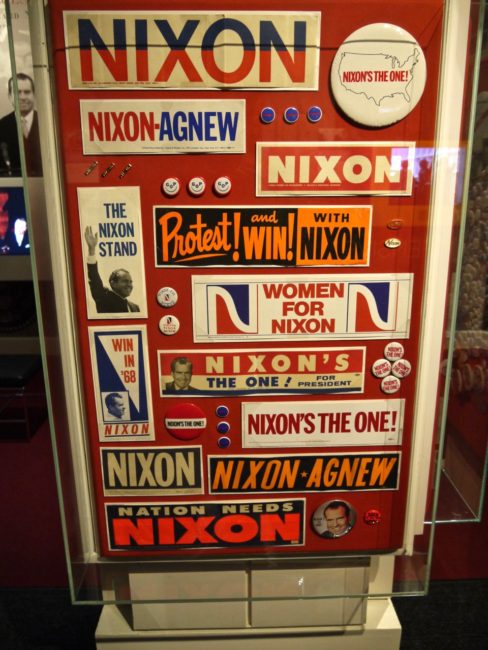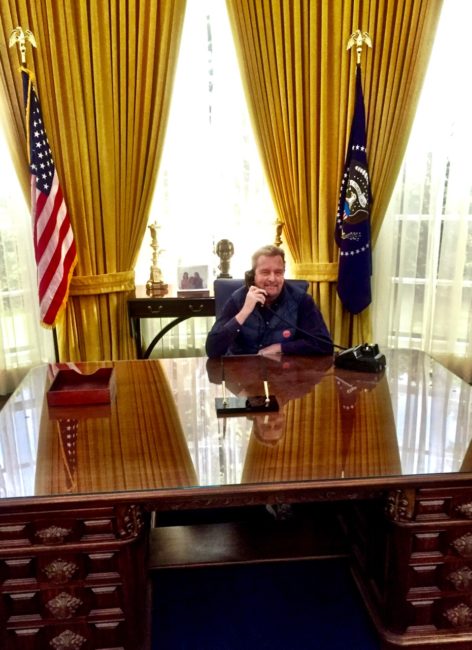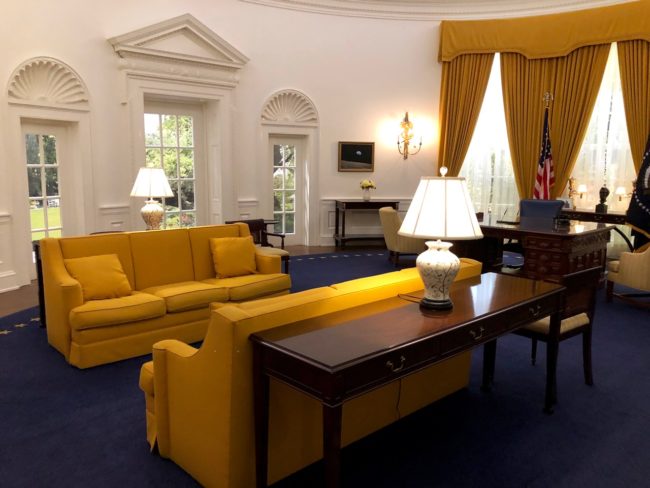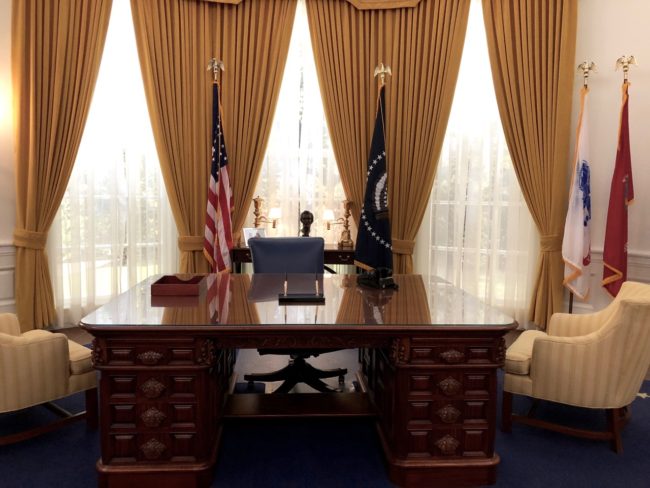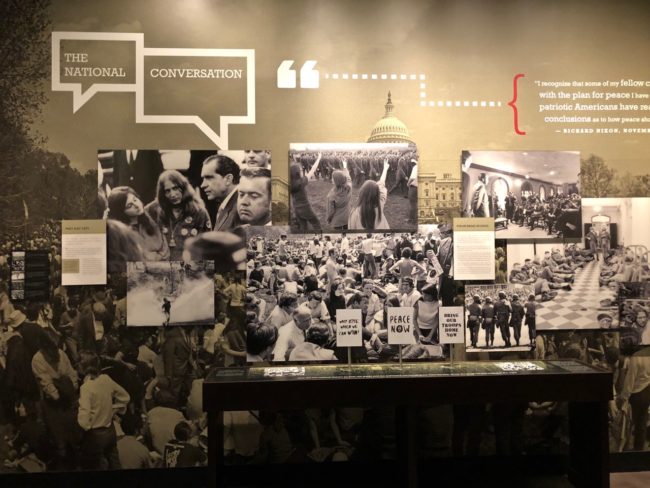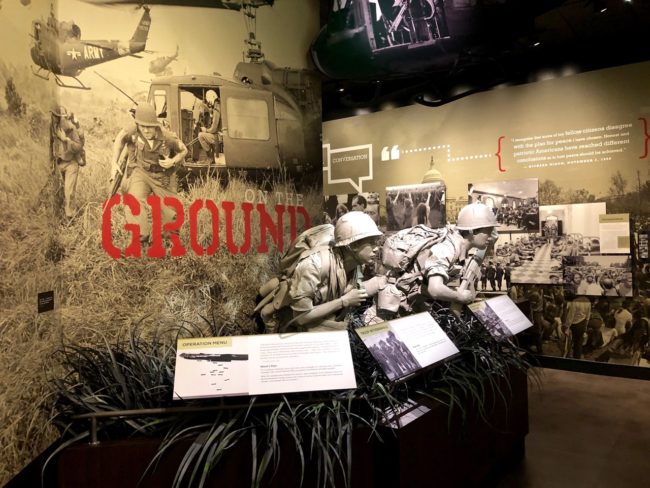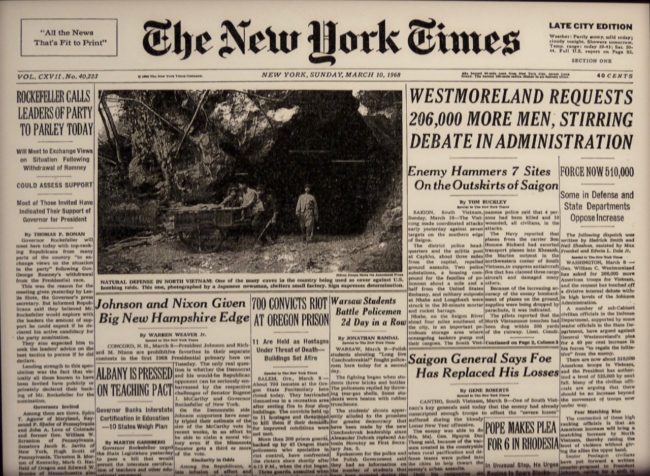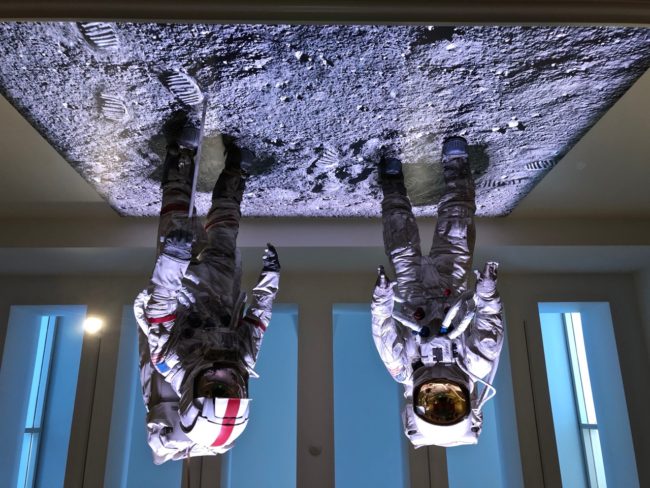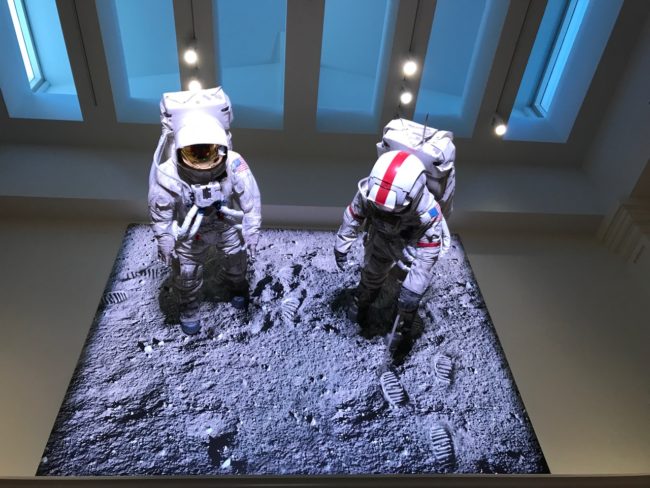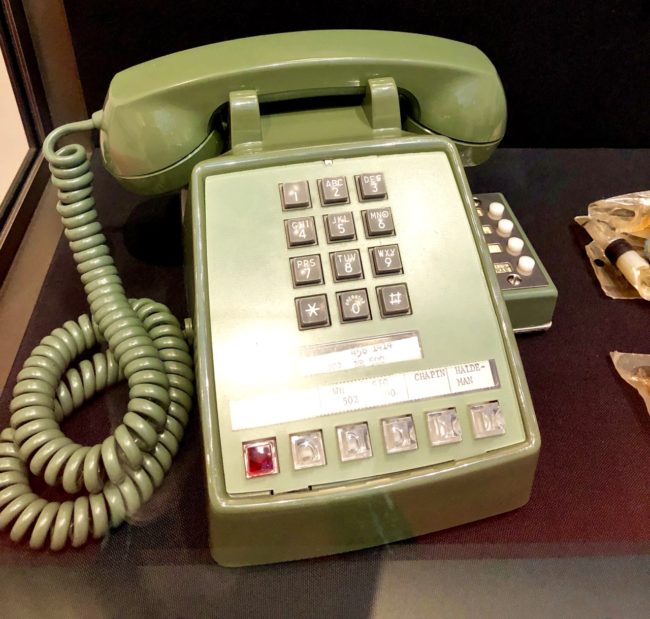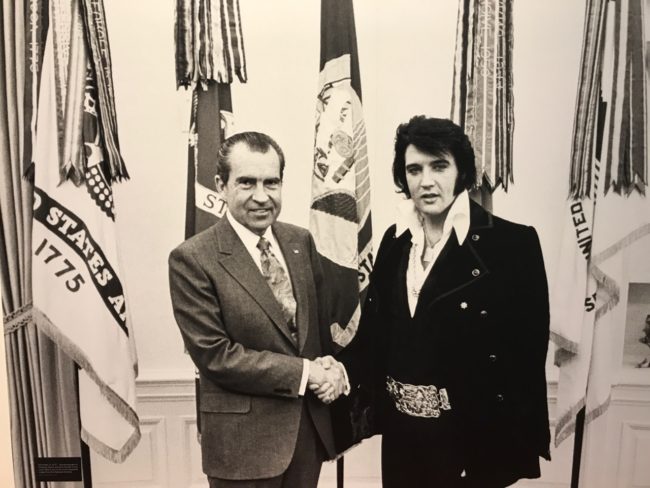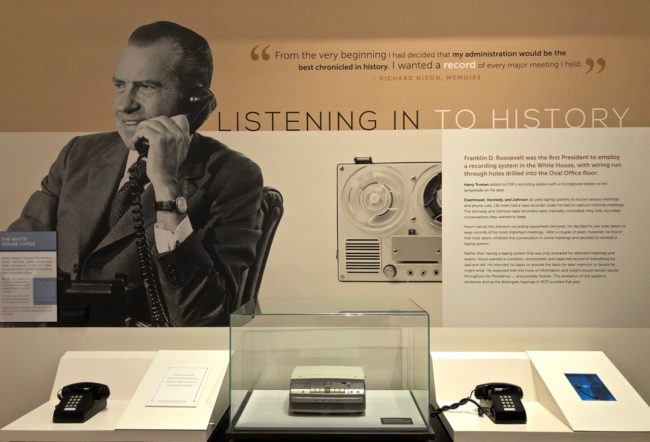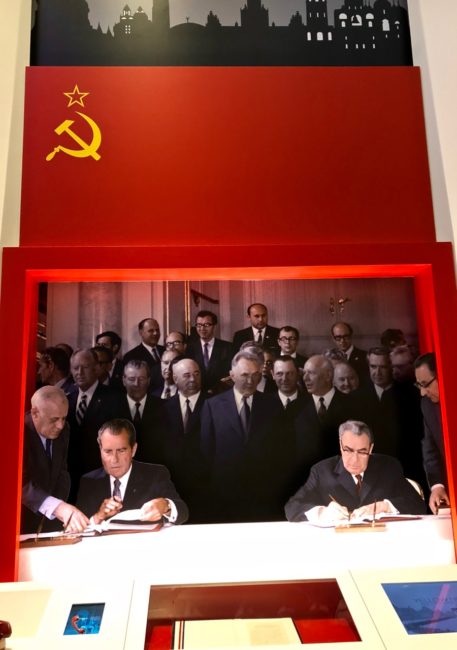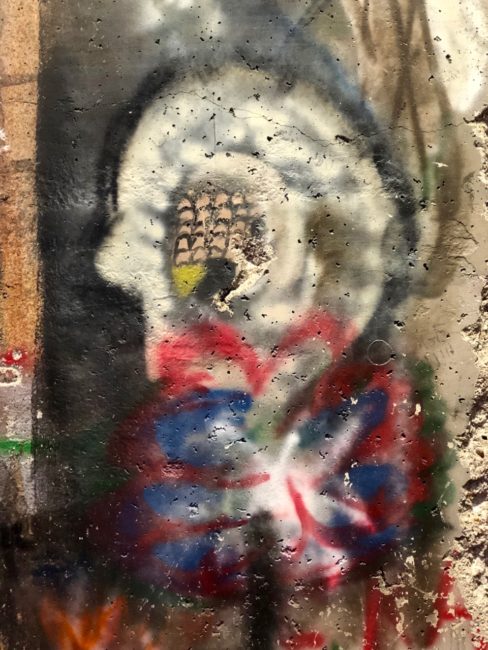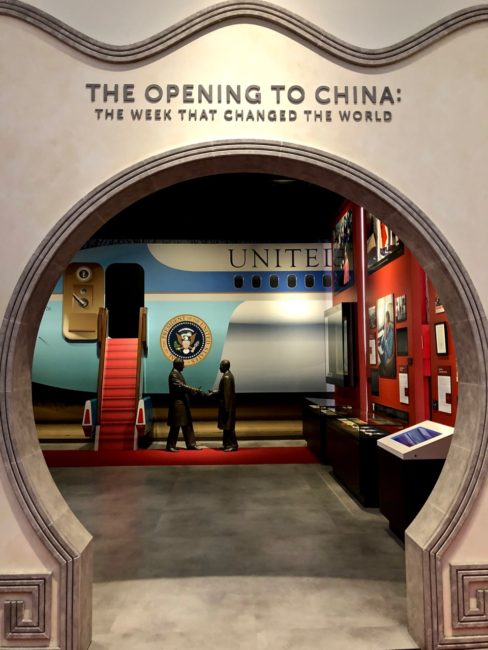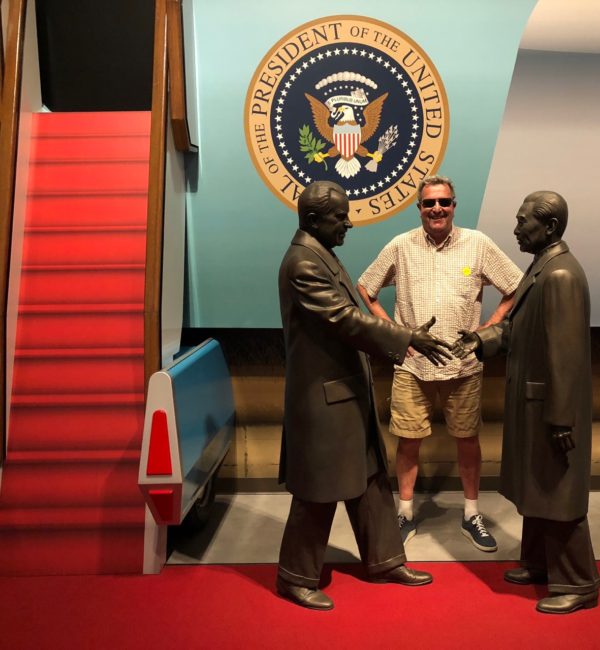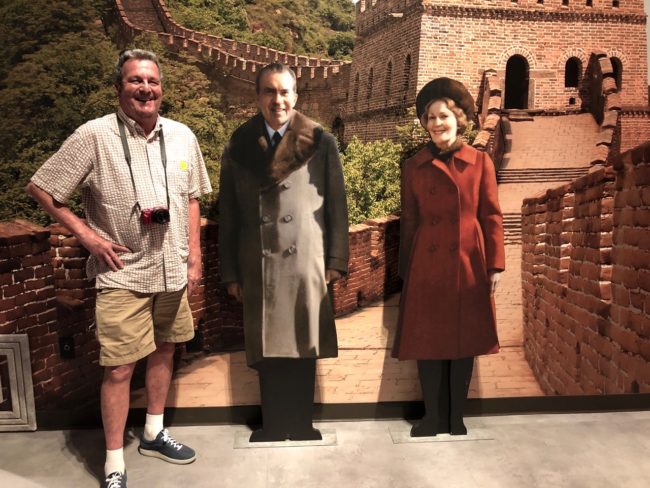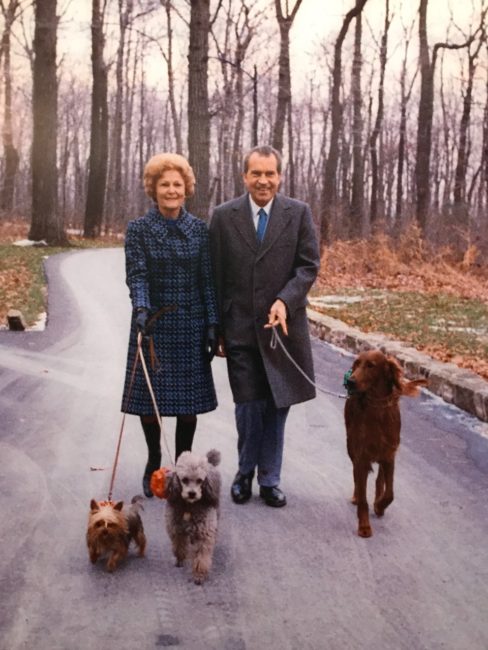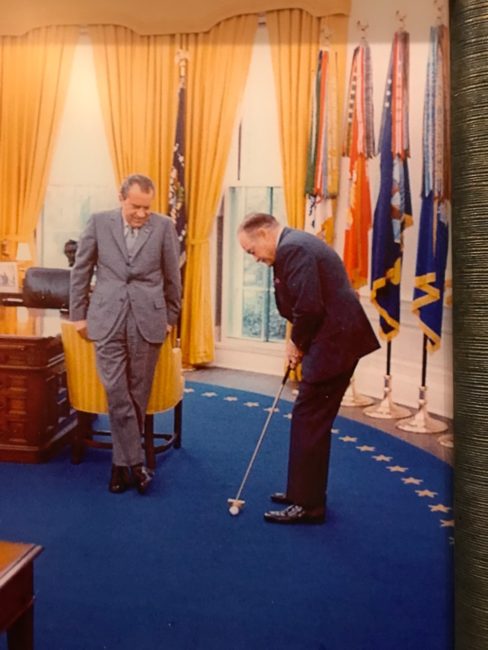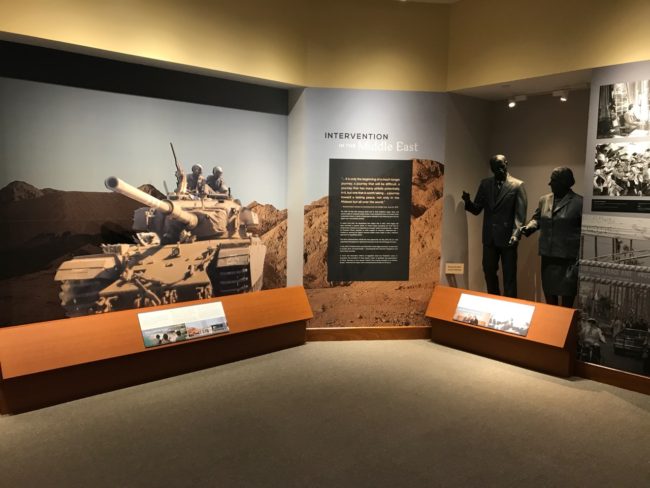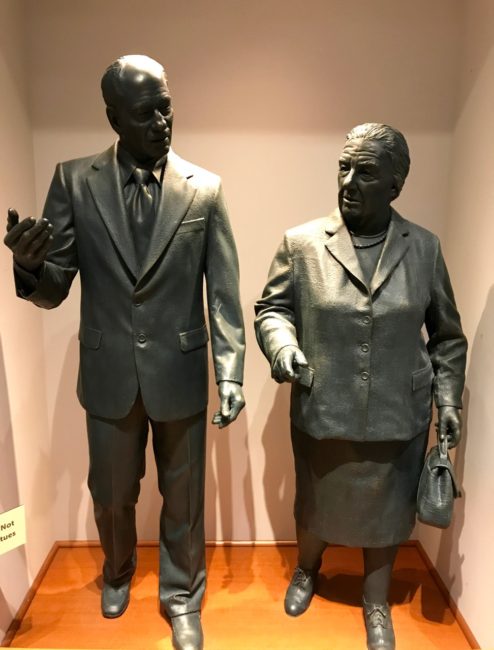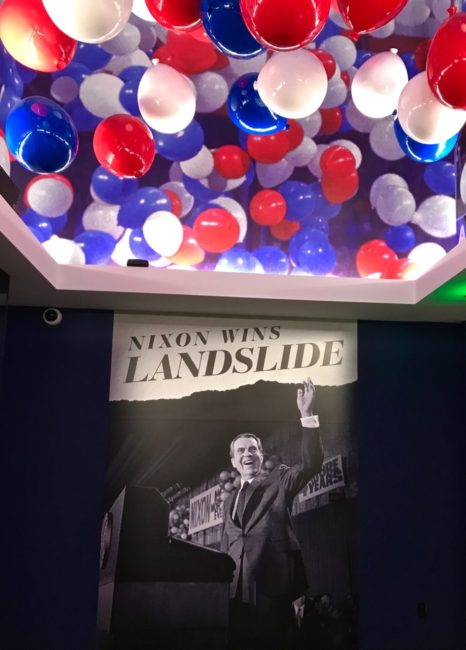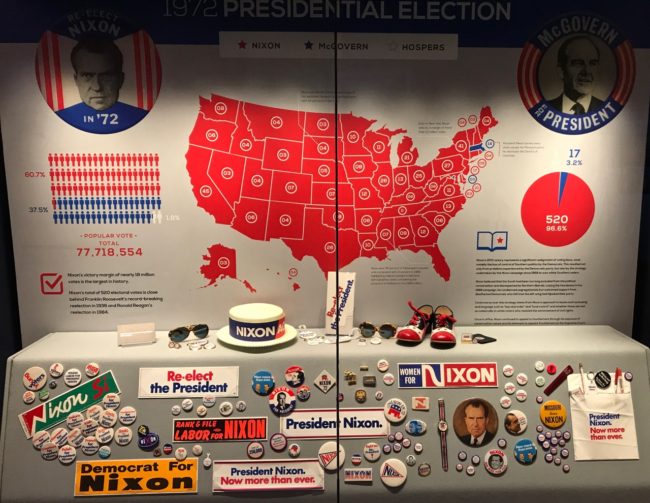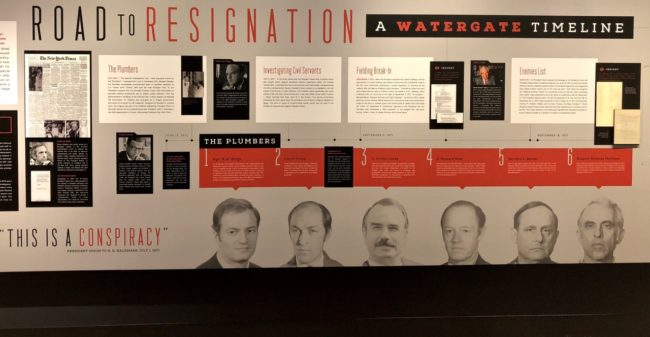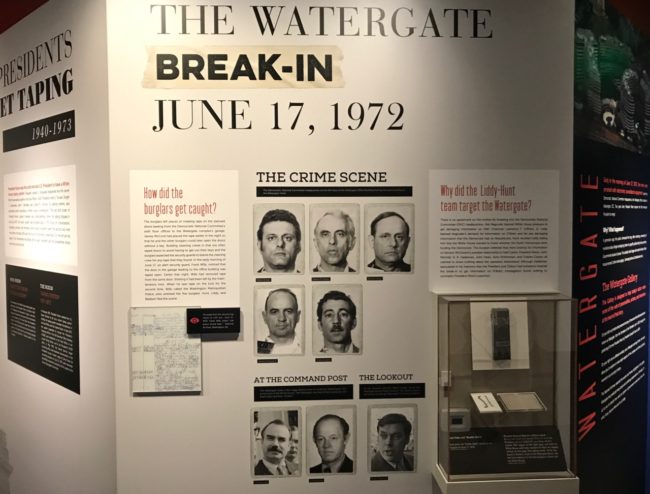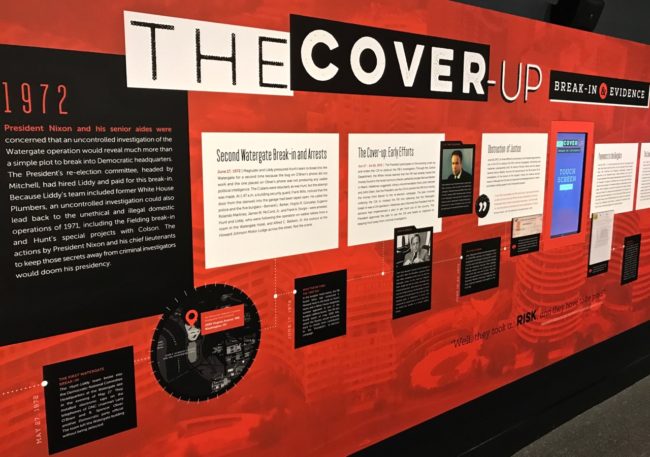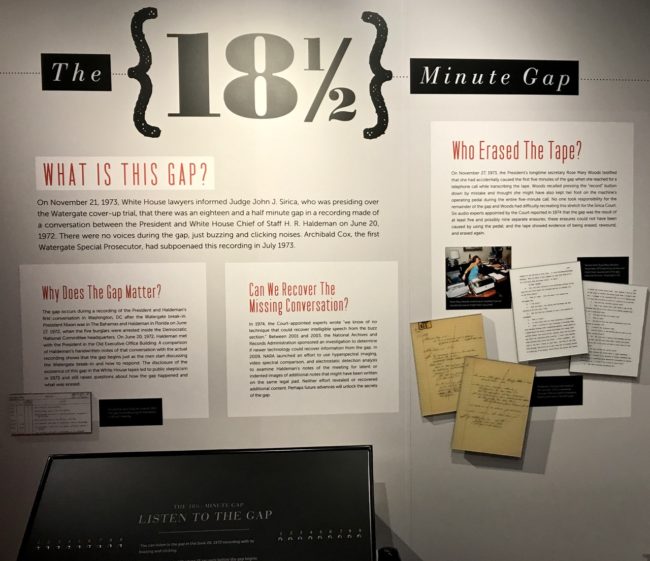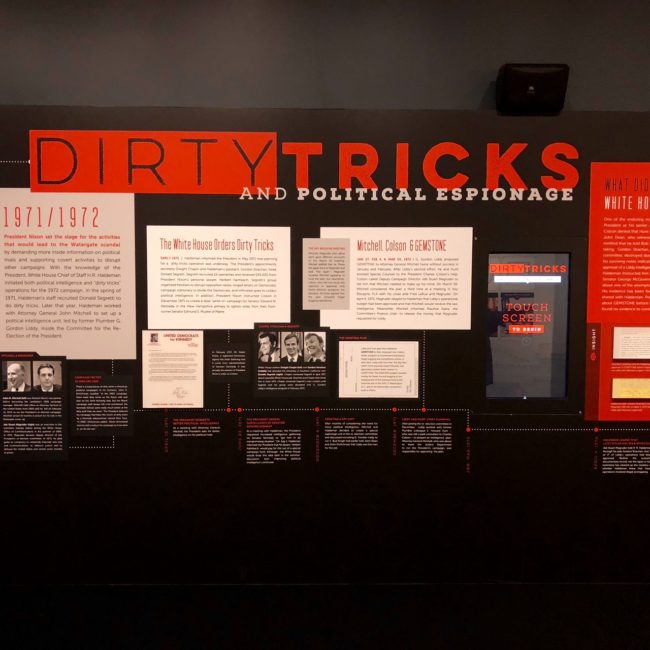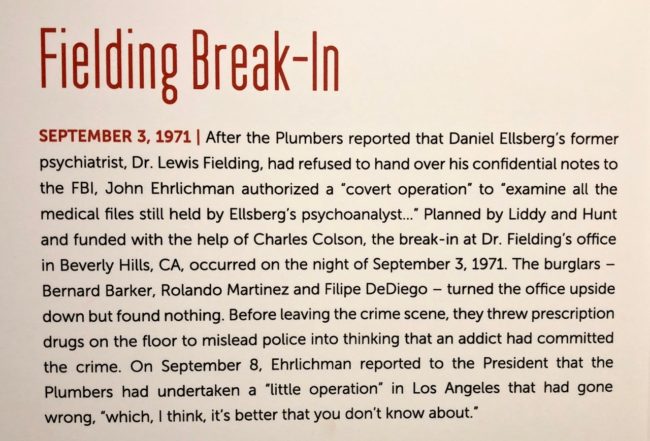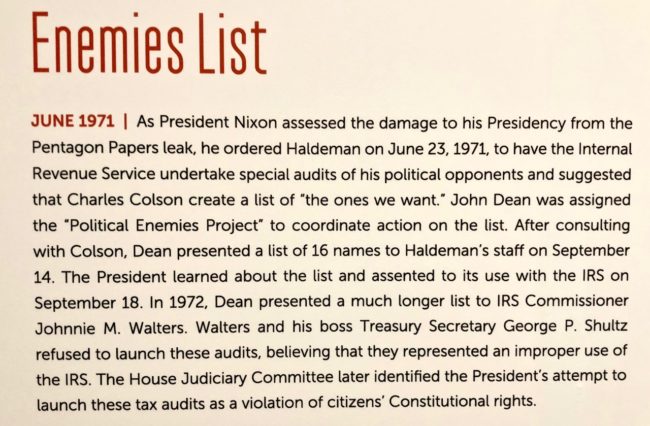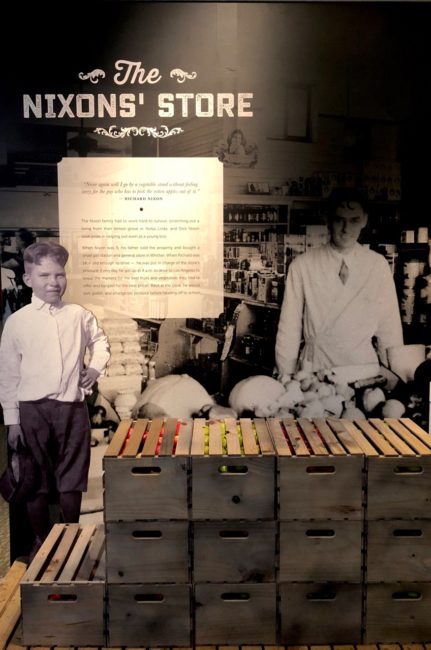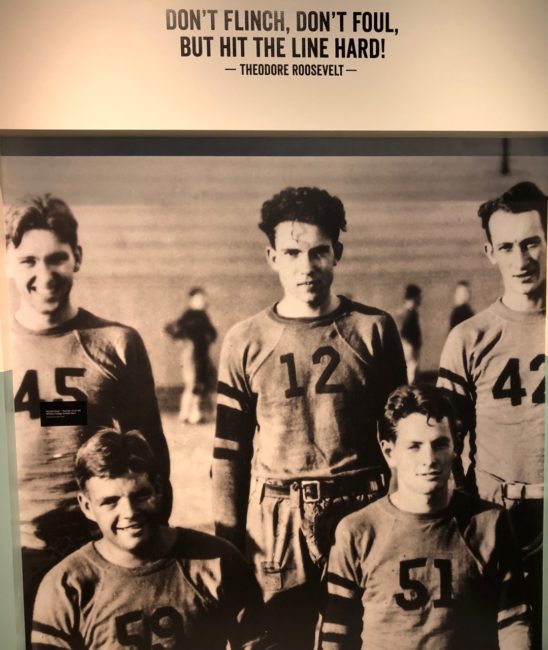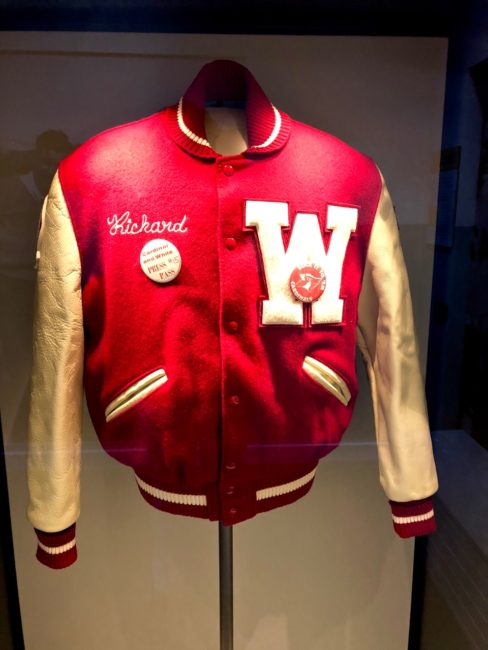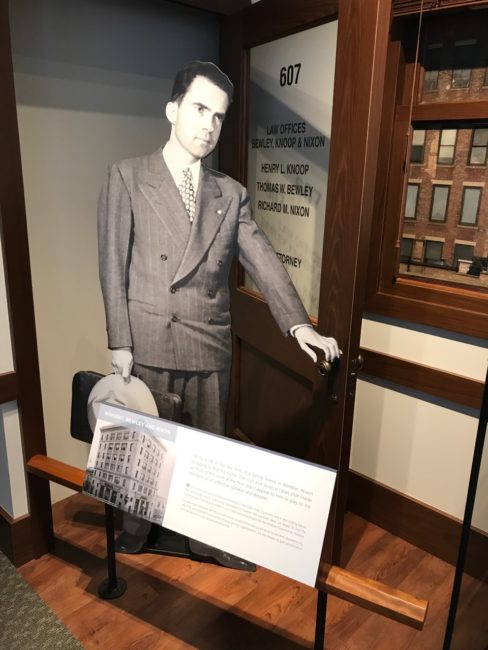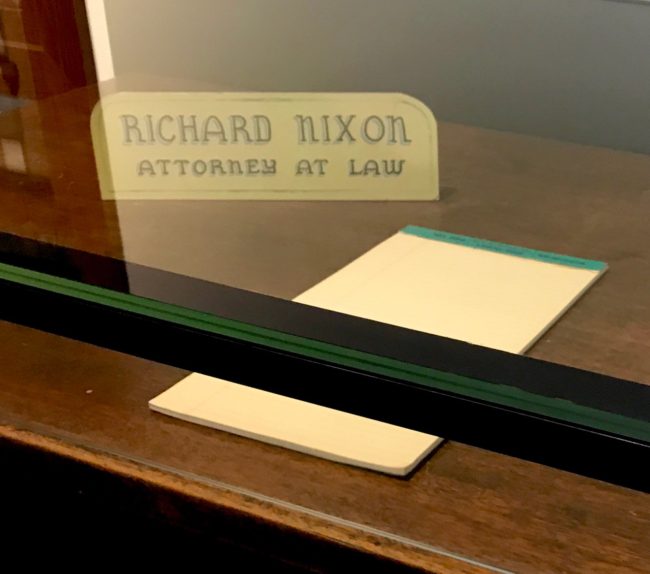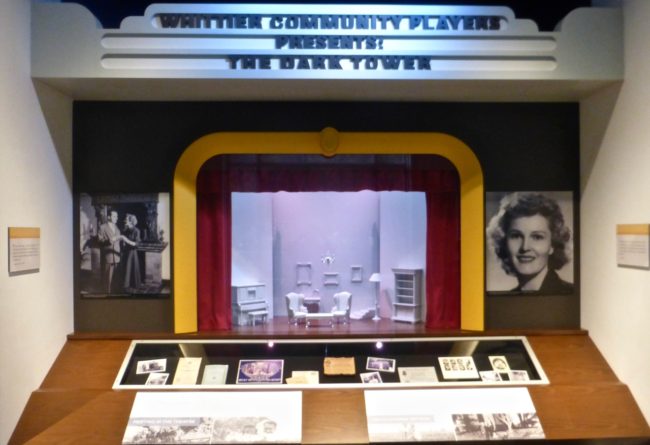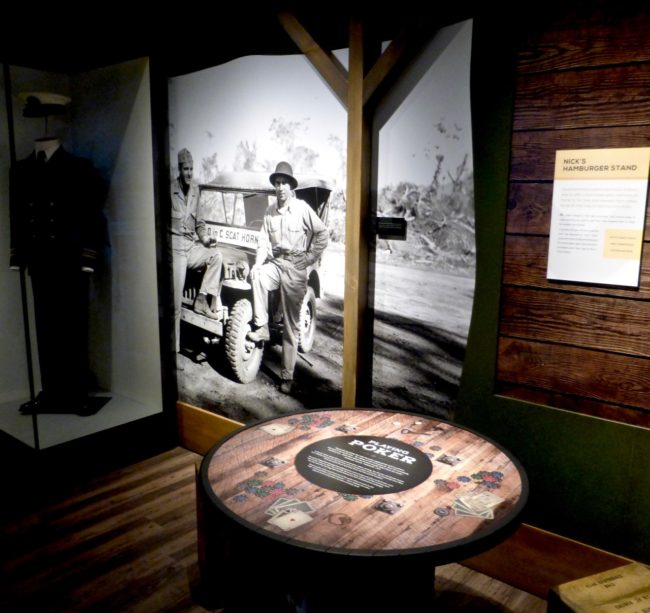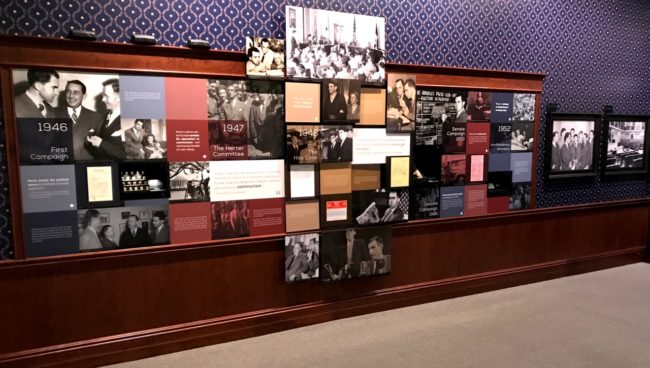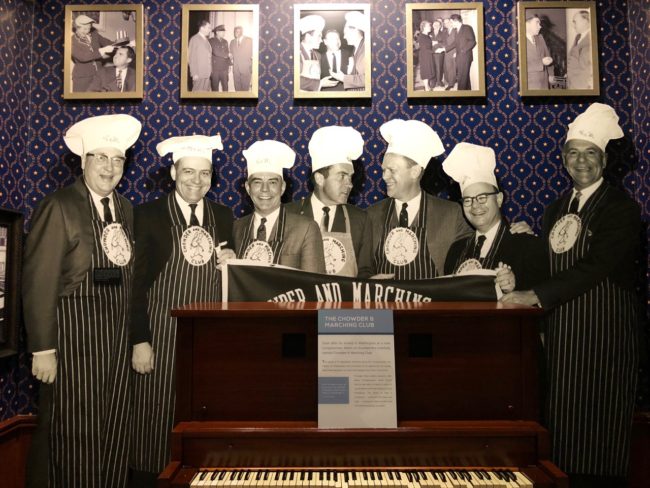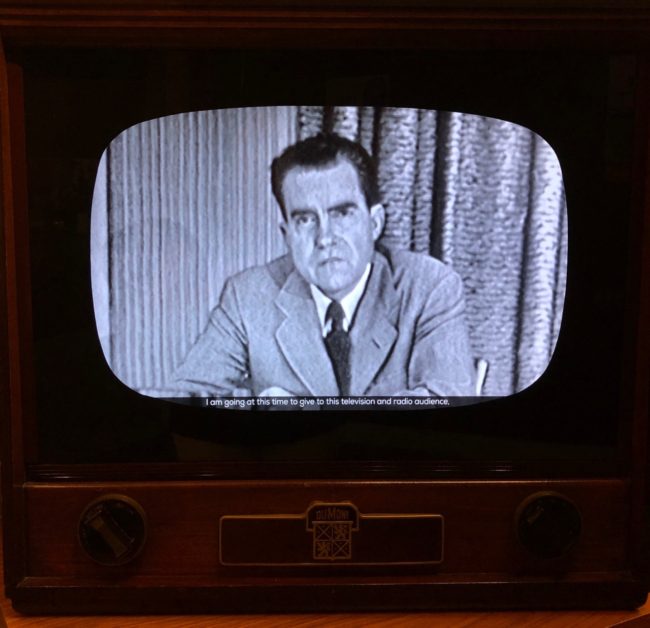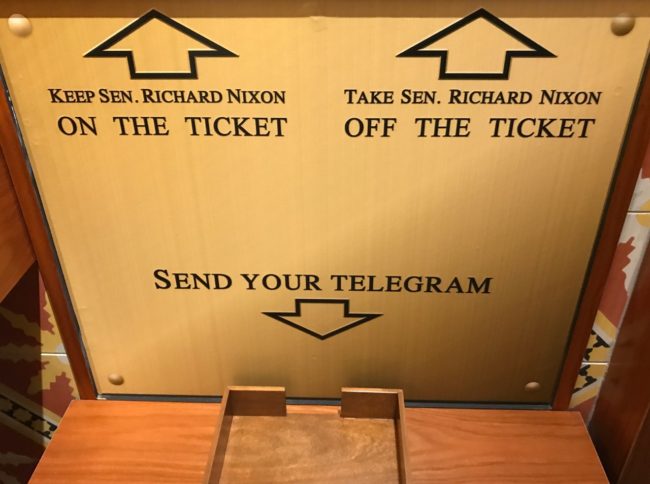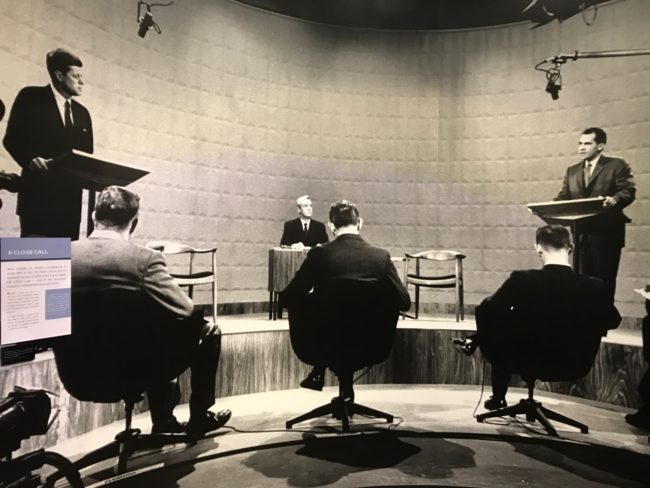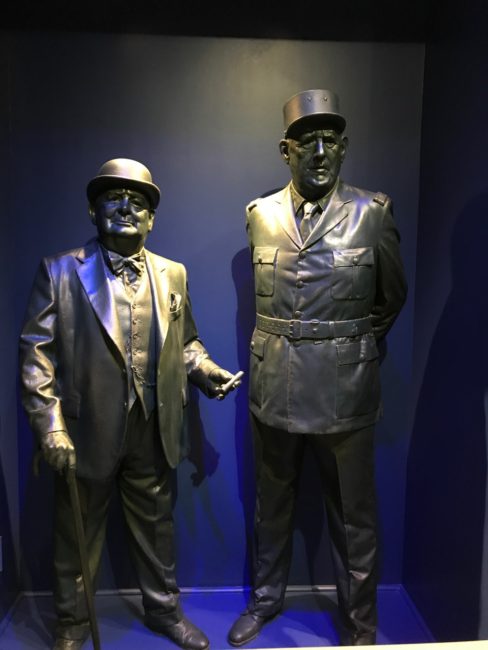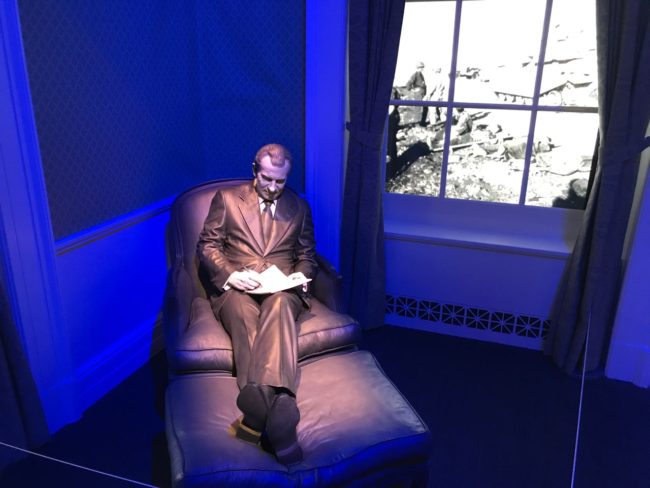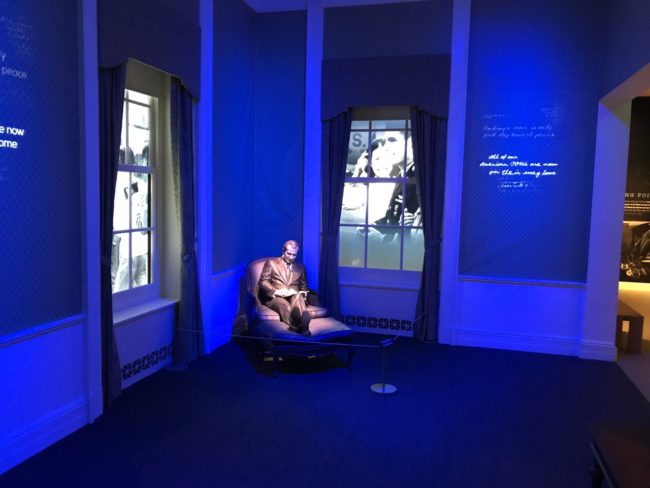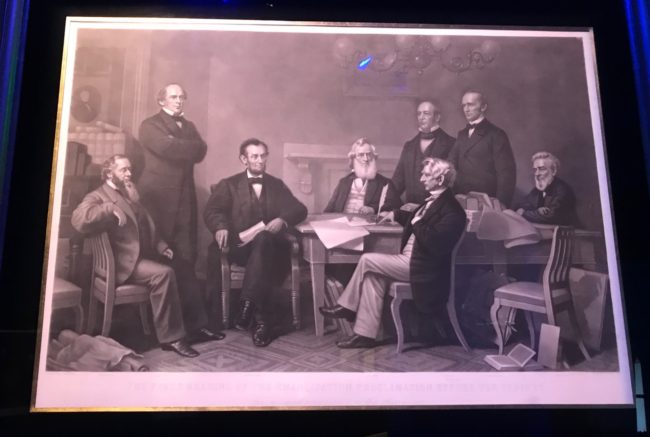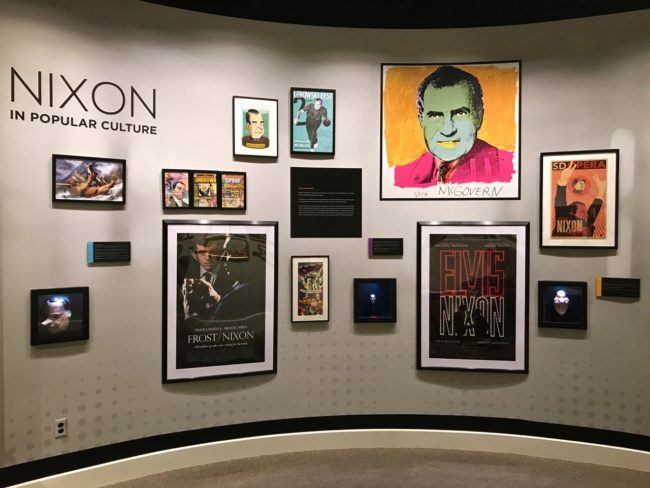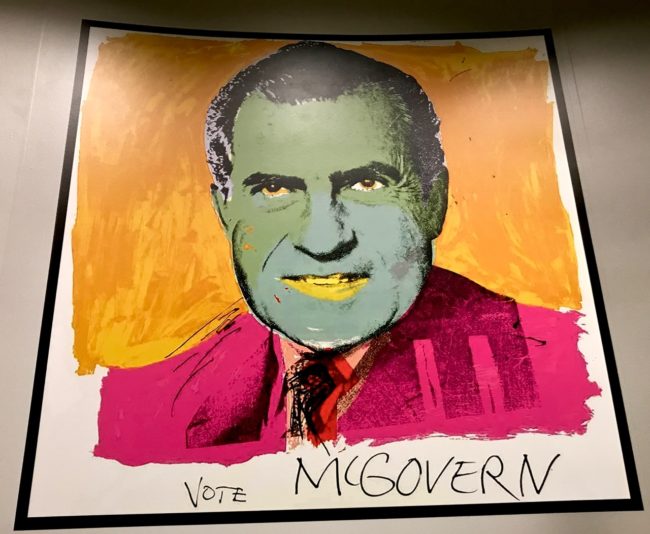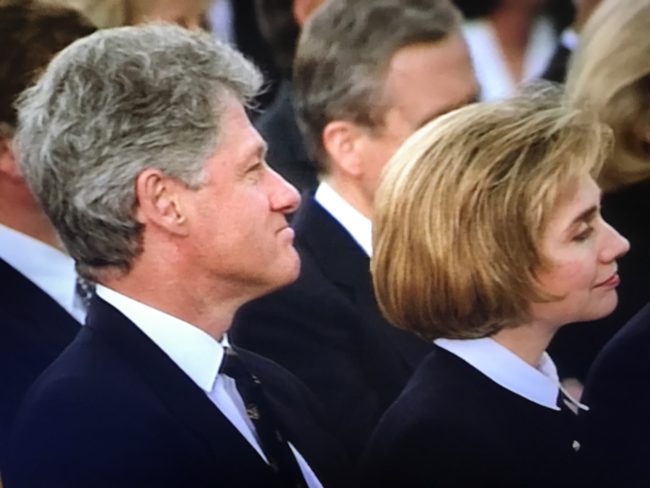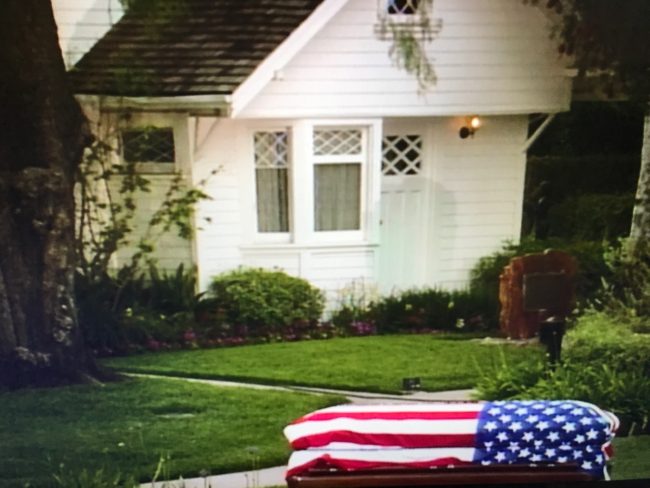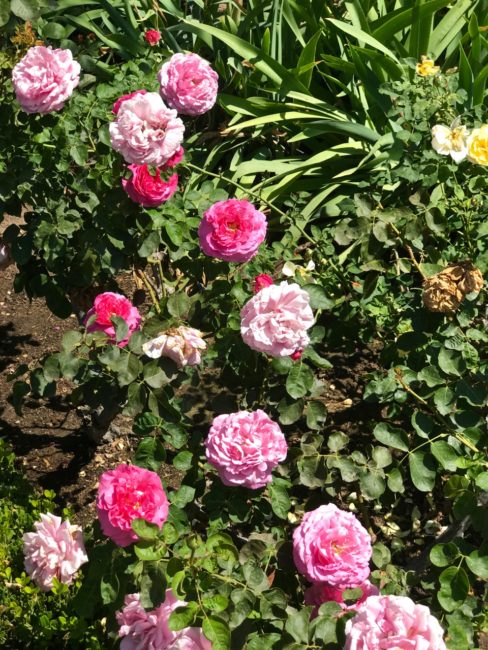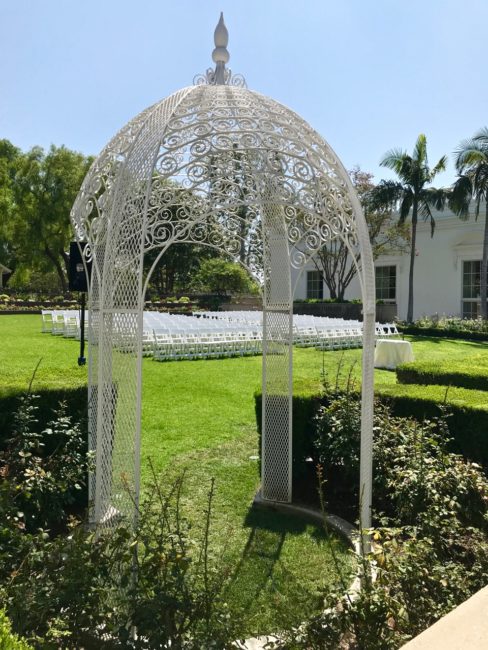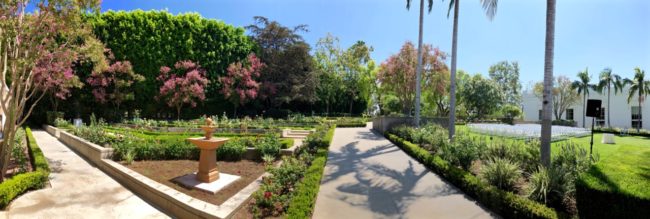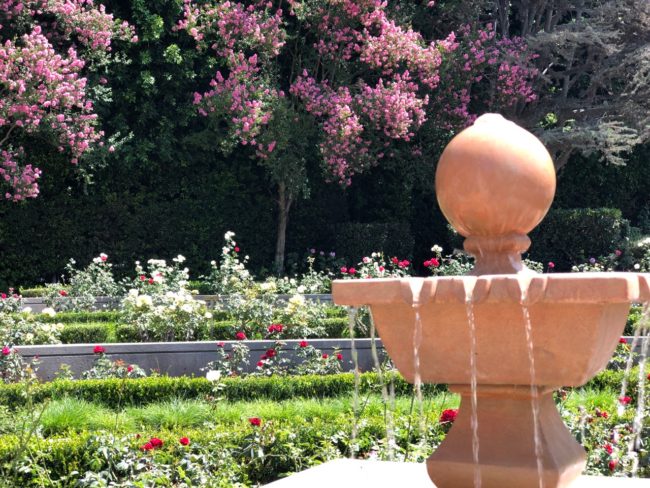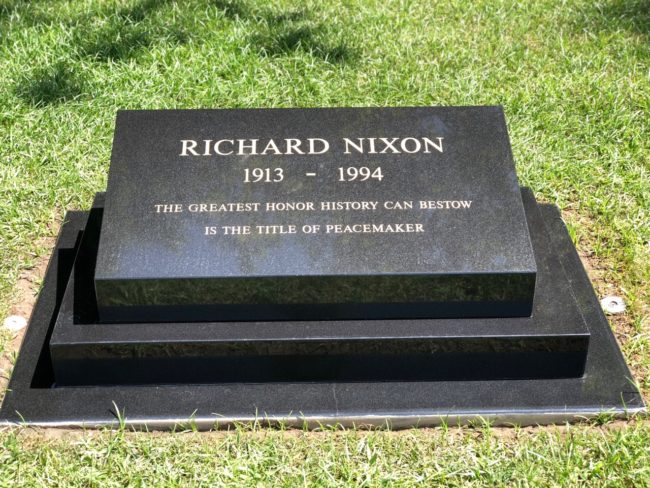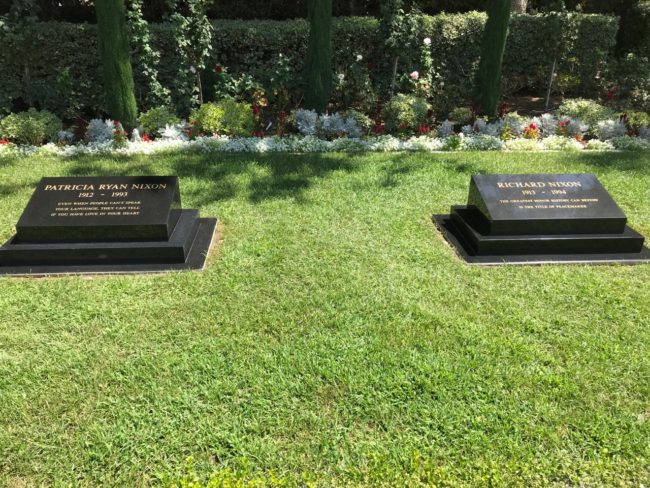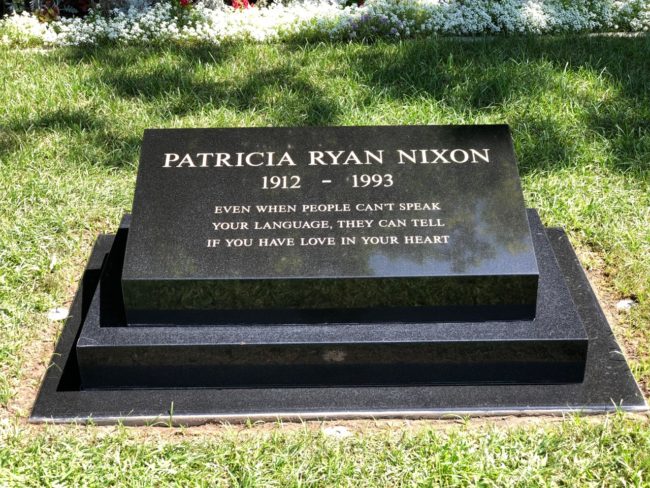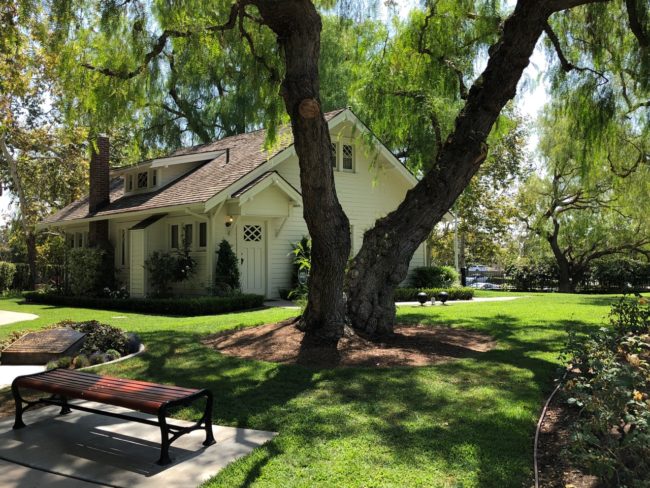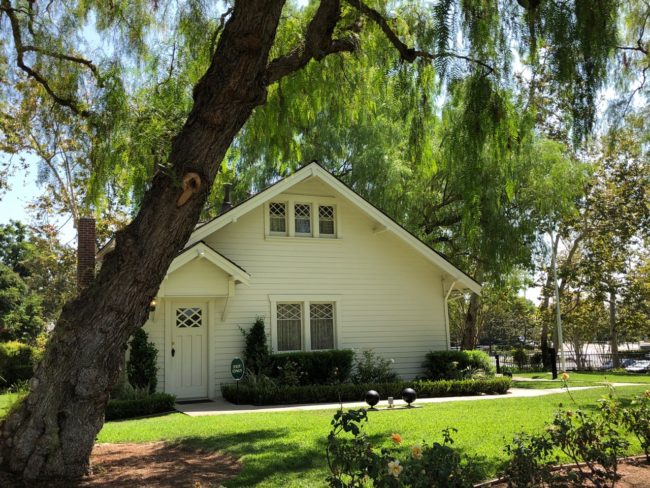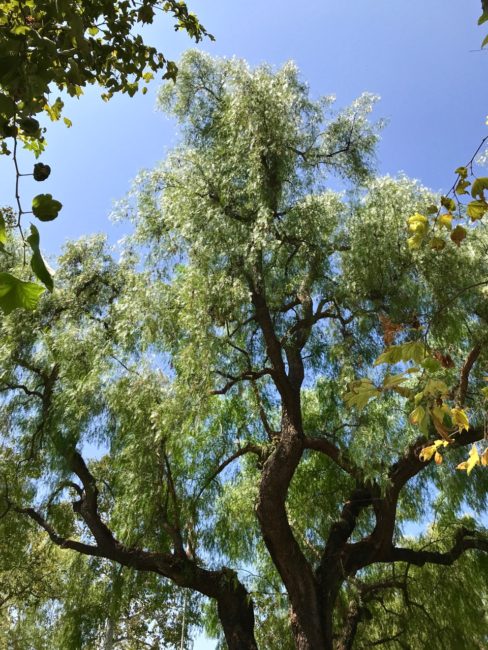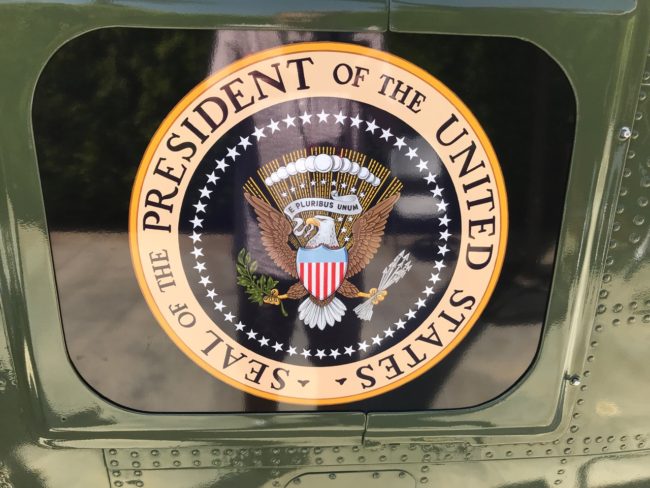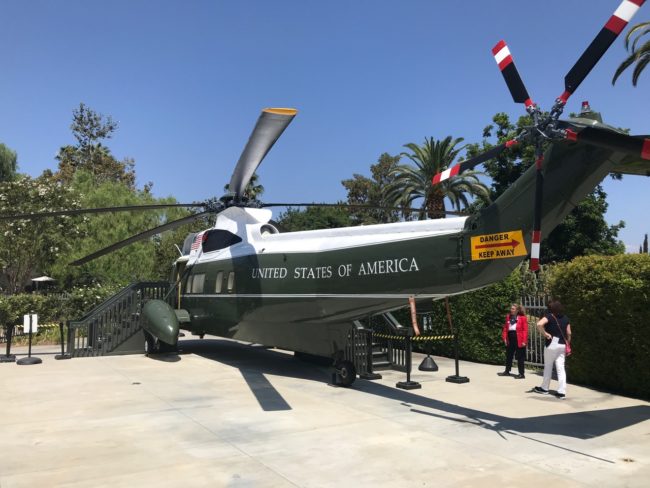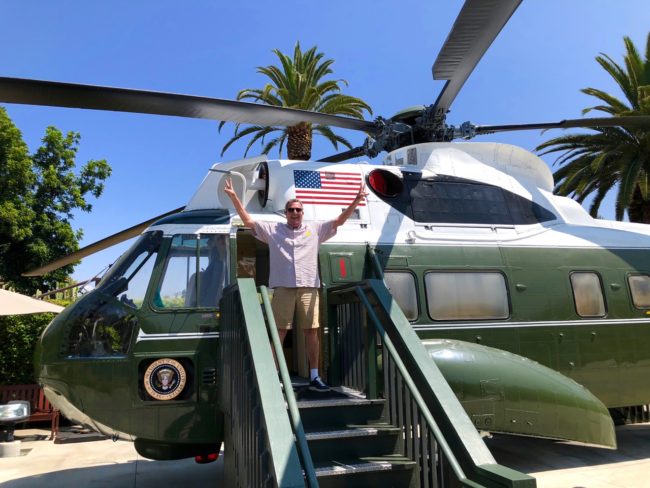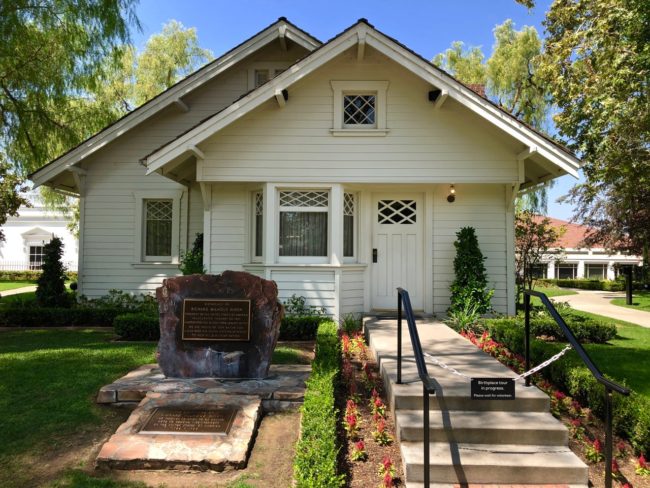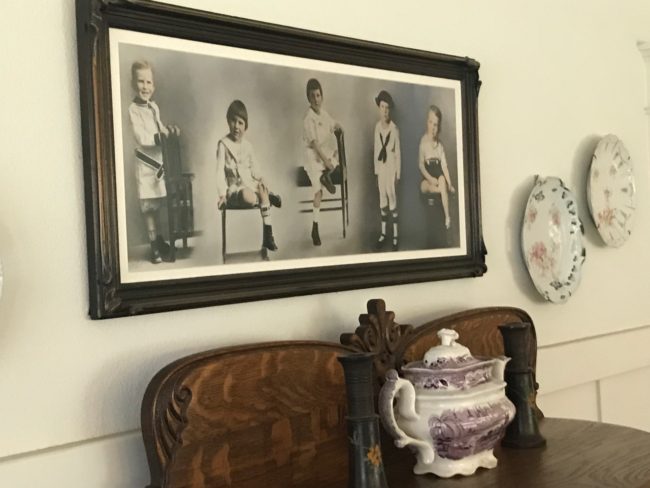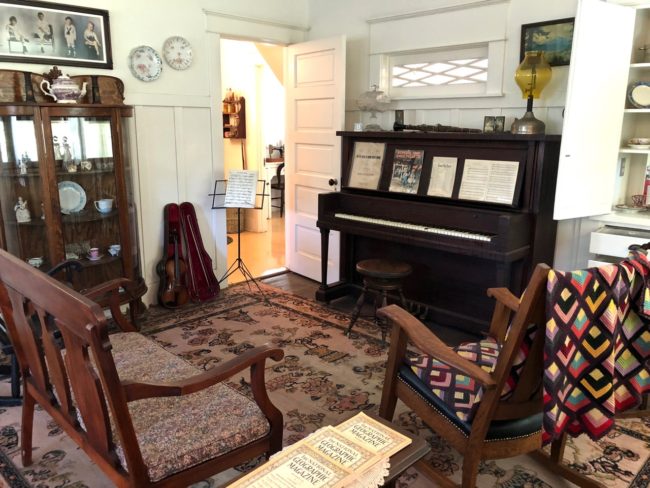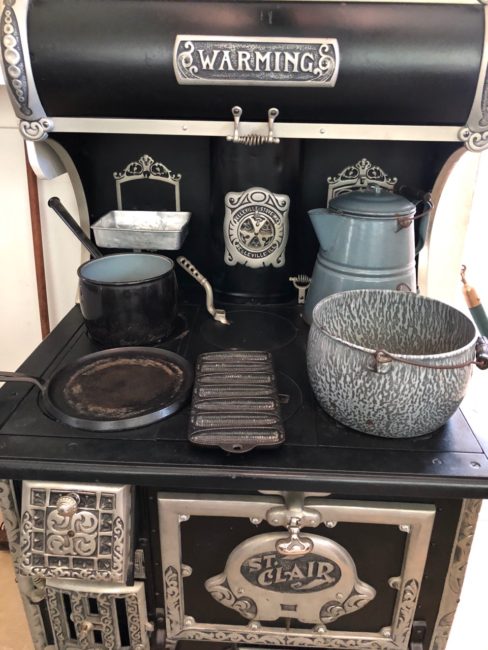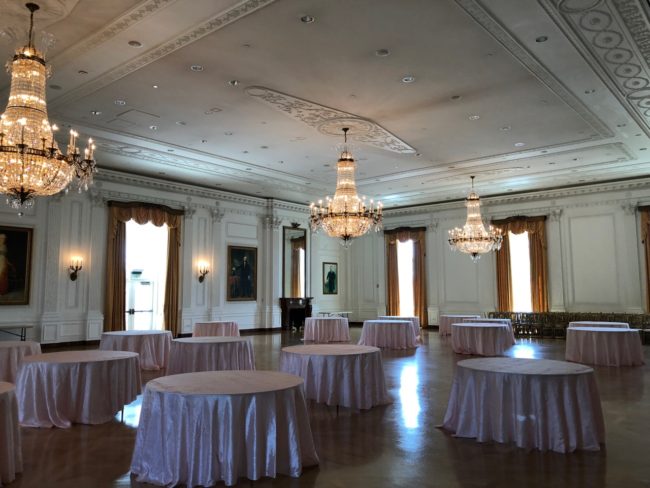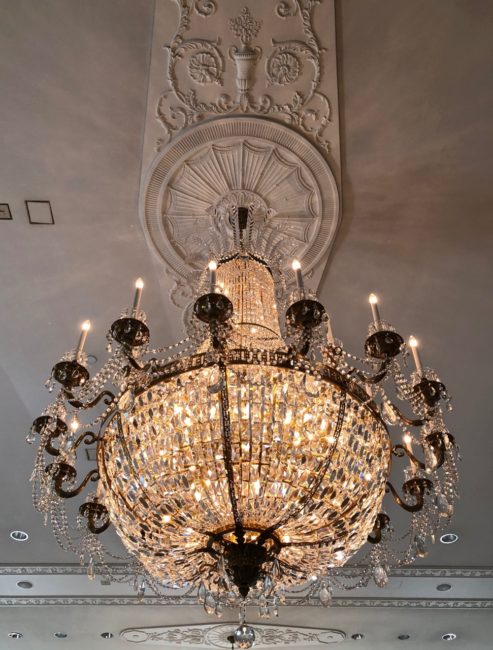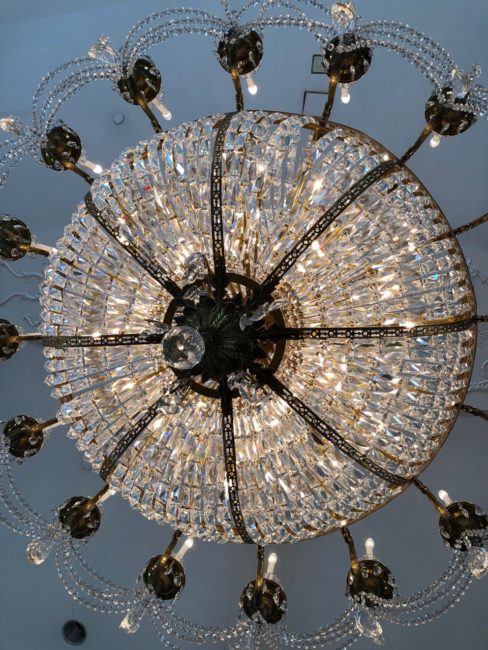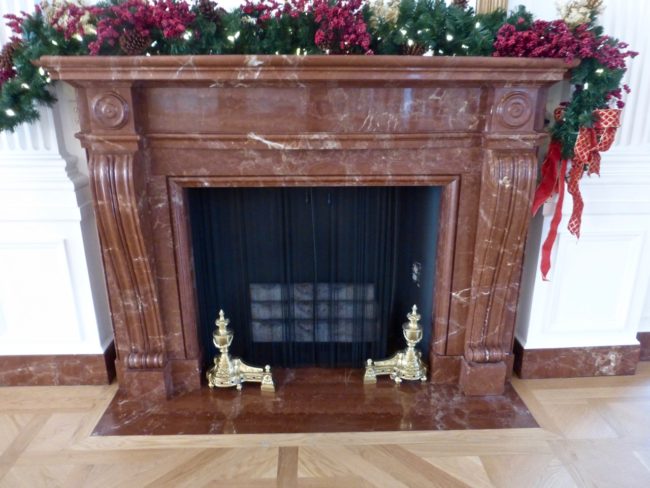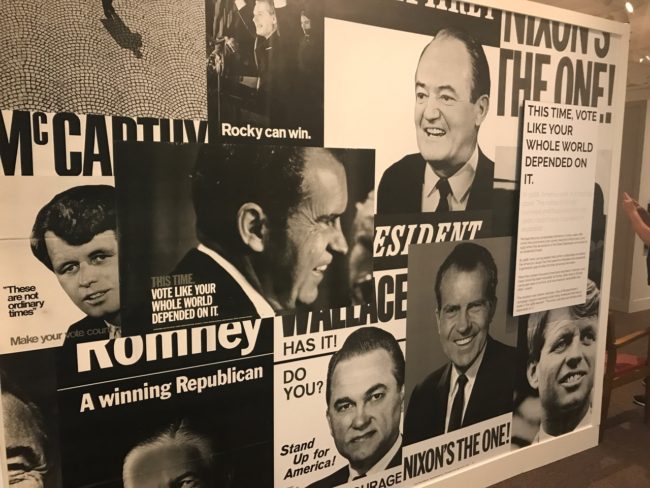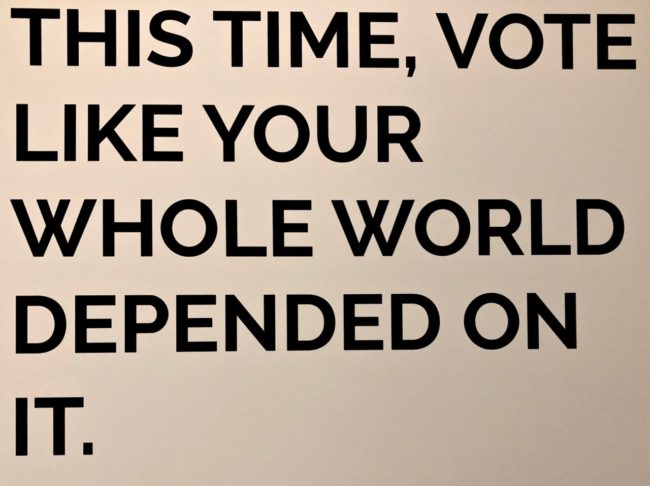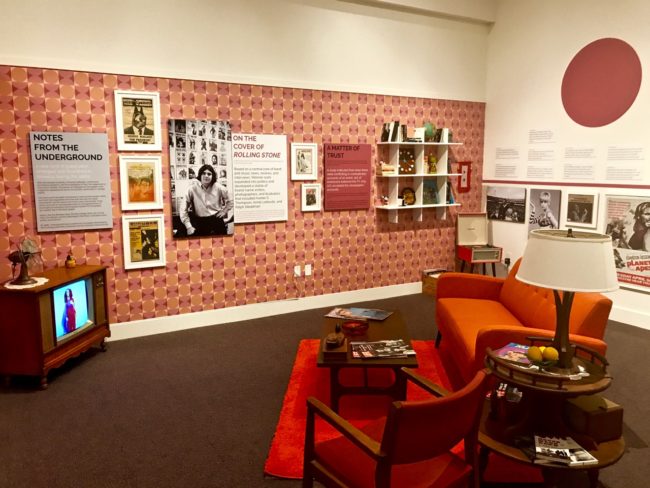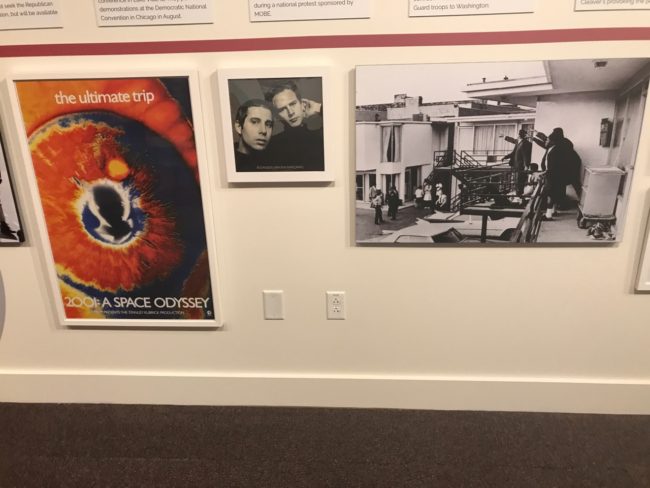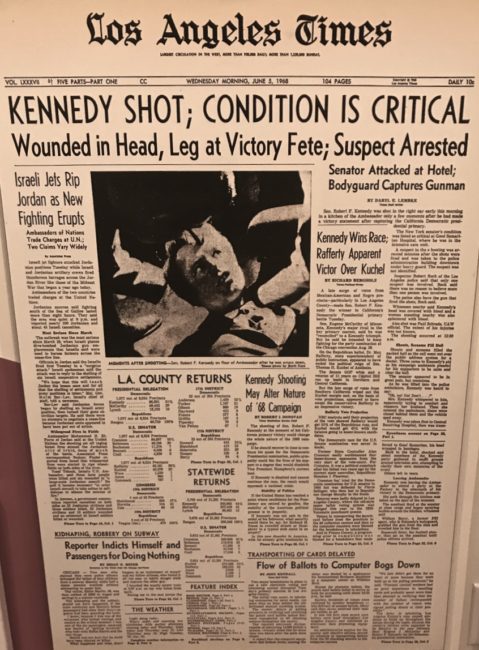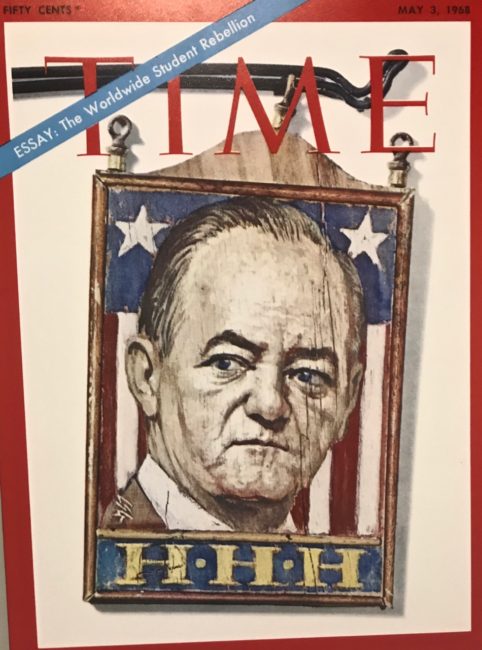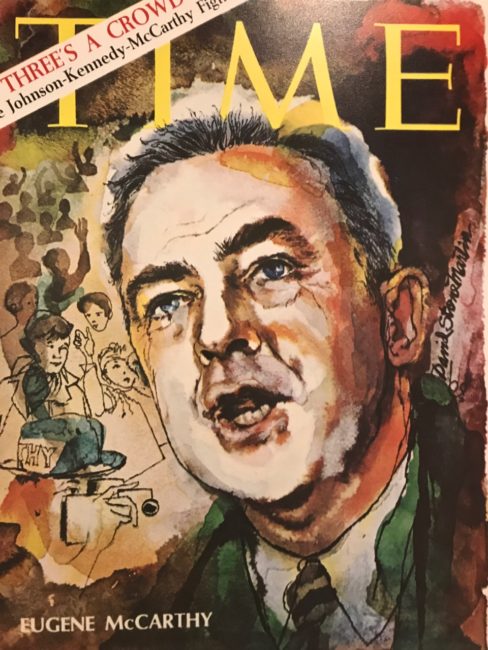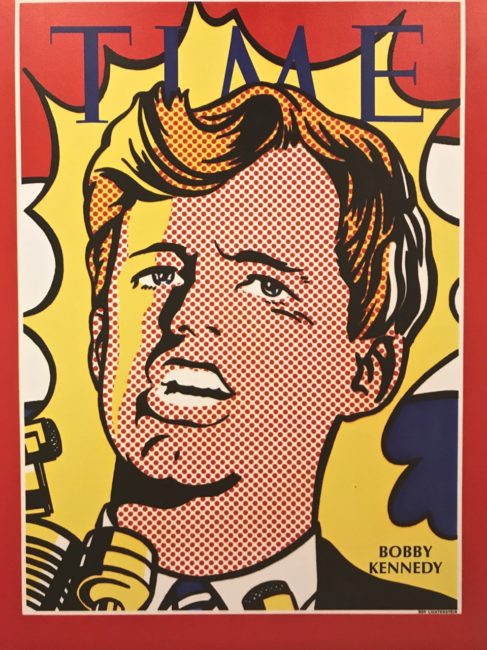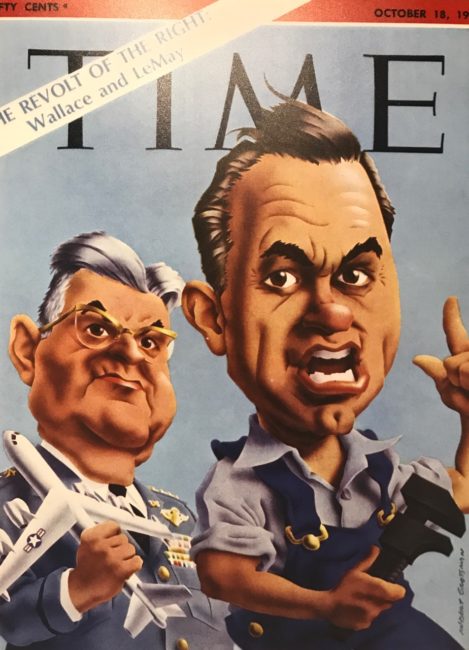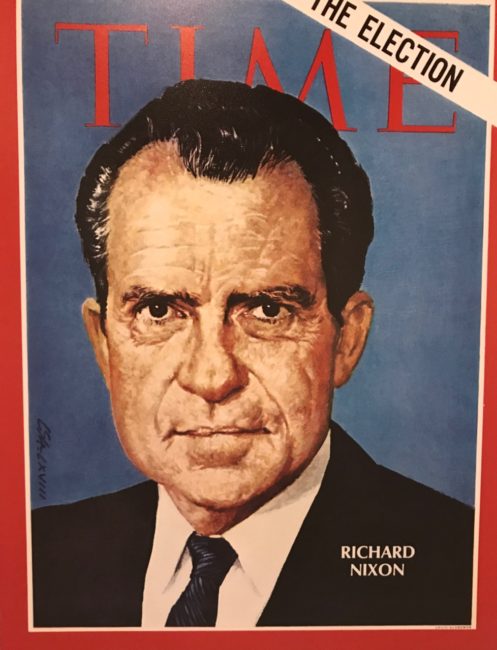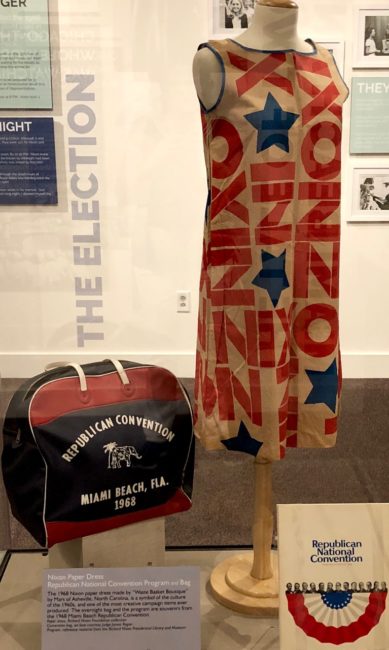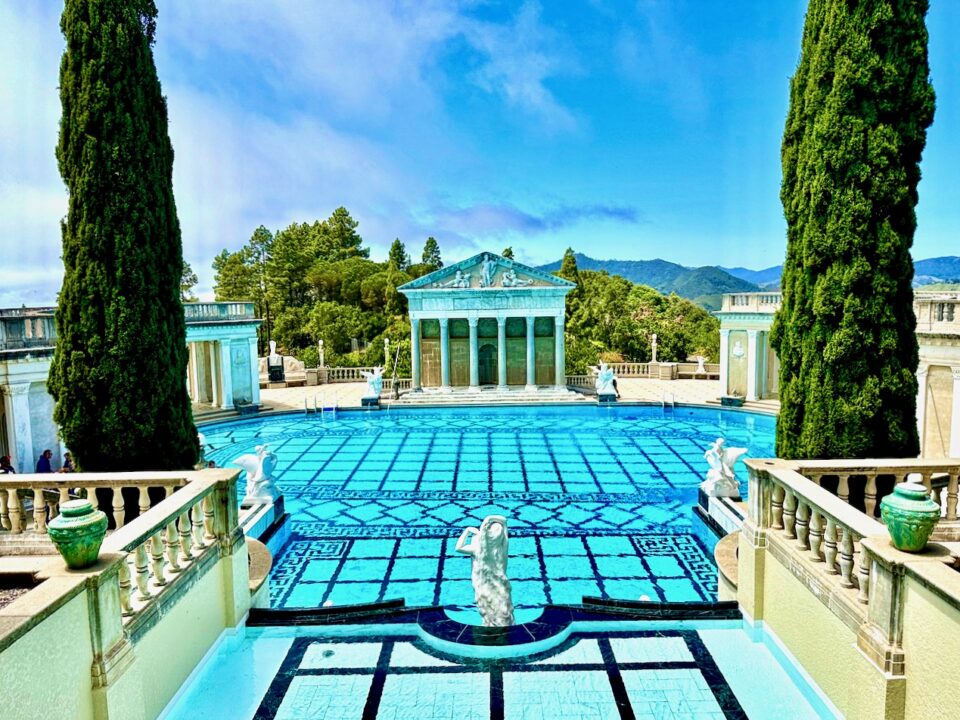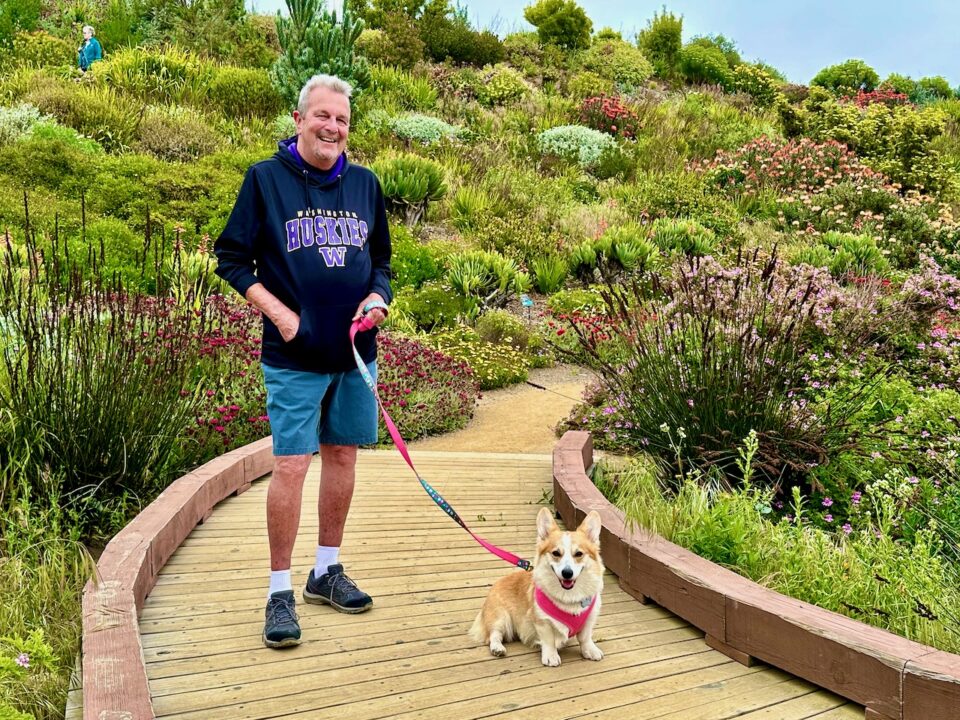
Angels Flight Railway – Los Angeles
July 6, 2018
San Francisco Museum of Modern Art (SFMOMA) – San Francisco
September 14, 2018“I’m Not A Crook!”
Richard Nixon Presidential Library and Museum – Yorba Linda
Visited: August 2018
When Tracy asked me what museum I wanted to visit recently, I answered, “Nixon’s the one!” We had visited the Richard Nixon Presidential Library and Museum five years ago on the 100th birthday anniversary of our 37th president, and since an unimpeachable source told us that a new renovation project had taken place since our last visit making it worth the trip, we decided to see what was new.
The library first opened in 1980 and immediately received negative reviews from historians who regarded it “as more of a whitewash than a faithful retelling of his presidency,” when it came to reliving the Watergate Scandal. In a Los Angeles Times article, “Historian and Nixon scholar Stanley Kutler called the library just ‘another Southern California theme park’ whose reality level was ‘slightly better than Disneyland.’”
In 2007 the museum became part of the official presidential library system, and the Watergate exhibit was replaced with one that took a much more comprehensive and critical look at Nixon’s presidency. That’s the one Tracy and I saw. On that visit, we thought the library’s exhibits were, for the most part, intriguing. Our tour that day also included the Army One helicopter a few presidents used (the same one that transported Nixon from the White House on the day he resigned) along with the house where Nixon was born. Both are located on the 9-acre grounds.
A few years later another restoration changed the look of the library, and in 2016 the $15 million renovation was completed, and the museum once again opened to the public. Some old exhibits were replaced with about 70 new exhibits, and, like so many museums utilize now, state-of-the-art technology to make it possible for a more interactive visit.
Although I pretty much disdained Nixon when I was in college and for years afterward, over the years I have softened my views a bit, as Nixon was a very complex man. We thought it would be interesting to revisit the presidential museum (also the final resting place for both Nixon and his wife Pat), which presents his triumphs, defeats and disgrace in great detail.
We pulled into the parking lot a little before its Sunday opening time of 11 a.m. and admired the beautiful fountain that sits out front.
Walking inside, the giant mural gives away who the museum is named after.
After purchasing your tickets, you can watch a 13-minute film in the Malek Orientation Theater detailing the life and career of Nixon. The movie tells of his accomplishments, but also details his weaknesses, which eventually led to his resignation. It was quite thought-provoking and might make you rethink a few preconceived notions you have of Nixon. It was very well done. (Note…since we were among the first to go inside the museum, we decided to get ahead of the crowd, and watched the film after we had toured the facility … a little trick we do to circumvent crowds at many museums that show films.)
We first had a dress rehearsal. More than 20 formal gowns of the First Ladies of the U.S. are temporarily displayed in an exhibit called “Why They Wore It: The Politics & Pop Culture of First Ladies’ Fashion.” These replicas will be on display until September 16, 2018, including these two worn by Dolley Madison and Barbara Bush. Dolley loved her red.
Now it was time to visit the various galleries. For those of us who remember 1968, it was certainly a year of turmoil complete with war, assassinations, racial strife and riots.
The “Wave Of Change” Gallery chronicles many of these events through murals and television broadcasts documenting the year that led up to the election of 1968.
It was quite a decade leading up to the ’68 election.
(Spoiler alert: Nixon beats Humphrey).
Next we stepped into the Oval Office, or at least the replica of Nixon’s Oval Office, where I had been photographed years before when I was sworn in as president for a few hours.
It was not reported in the press for fear of mass hysteria.
Of course, the Vietnam War was on everyone’s minds during the 60s and early 70s, and this room displayed the many sides of the conflict, from those who opposed the war …
… to those who fought in it.
When you walk into the next room (Domestic Policy Vision), be sure to look up first. Standing above us on the moon’s surface were Neil Armstrong and Buzz Aldrin, the first two humans to ever to take a step there and do a moonwalk. There was no sign of Michael Jackson.
To the right as you enter the room is the telephone Nixon used to call them. I assume he did not call collect, as charges to the moon can be astronomical.
On December 2, 1970, the President met “The King” in the Oval Office. Suspicious minds believed the president was all shook up after the meeting, especially since Nixon later said the meeting was, “Always on my mind.”
Nixon declared that “… my administration would be the best chronicled in history. I wanted a record of every major meeting.” I mean, what could go wrong?
On the international front, Nixon actually met the Russians with other people around.
No presidential library is complete without a piece of the Berlin Wall.
We then headed to China, just like Nixon did in February, 1972. After I witnessed Nixon and Chinese Premier Zhou Enlai’s historic handshake …
… I accompanied the Nixons on their visit to the Great Wall.
From the time of Checkers the dog in 1952, the Nixons enjoyed time with their pets. Here they take their dog King Timahue, daughter Tricia’s Yorkshire Terrier Pasha and daughter Julie’s French poodle Vicky for a stroll. Checkers never made it to the White House. He died in 1964 (more about Checkers later).
Elvis wasn’t the only famous person to visit the Oval Office. Here, Bob Hope offers the president some putting tips.
Like all presidents (well, almost all), Nixon attempted to find a semblance of peace in the Middle East.
Although enemies, Israel’s Golda Meir and Egypt’s Anwar al-Sadat sought a solution to bring some sort of stability to the region. These and the other life-size statues interspersed throughout the museum were all located in one room before the latest renovation of the Nixon Library.
We were about to come to the highs and lows of the Nixon administration. One small area denotes Nixon’s landslide victory over George McGovern, the largest margin of victory ever until the 49ers demolished the Chargers in the 1995 Super Bowl. McGovern only won one state.
It wasn’t long before the low. The Road To Resignation Hall takes you on the Watergate Scandal journey from the break-in through the resignation.
Watergate scholars could spend hours here listening to tapes and wading through all the information.
Certainly Rosemary isn’t out of the Woods on this gap.
Everything is chronicled in this area.
No, this is not about me. A little of Nixon’s paranoia is shown in his “Enemies List.”
We traveled from Watergate to Nixon’s childhood and early adulthood in the next section. Nixon’s dad sold a Yorba Linda, California, lemon grove when Nixon was nine years old. He then purchased a gas station and general store in Whittier, and when Richard was old enough to drive, he was put in charge of the store’s produce.
Nixon was the third string guard for his Whittier College football team. Even with that, Nixon once stated that he admired his head coach, Wallace Newman “more than any man I have ever known aside from my father.”
Travels With Mai Tai Tom Fun Fact: the nickname for Whittier College is the Poets. I thought there was no rhyme nor reason for it until I found out it was named after Quaker poet John Greenleaf Whittier.
After graduating from Duke University Law School, Nixon returned to California to practice law. Nixon loved to write down everything on yellow note pads.
He also did some community theater, which is where he met Thelma “Pat” Ryan, who would become his wife.
Nixon served in the Navy during World War II, and obviously liked to play a little poker.
The next room detailed his early political career.
This included a display of him as a new Congressman who co-founded the Chowder & Marching Club. The club was made up of 15 Republican freshman and junior Congressmen (all World War II vets). Nixon once described the Chowder and Marching Club as ”the most ill-organized, disorderly organization I know.” Coincidentally, next to Nixon is Gerald Ford … the man who pardoned him after his resignation.
An old TV was showing Nixon’s famous September 23, 1952, “Checkers Speech” where Nixon had to defend being accused of improprieties in political expenses. The most famous part of the speech is where he talks about receiving a dog as a gift. “It was a little cocker spaniel dog in a crate that he’d sent all the way from Texas. Black and white spotted. And our little girl—Tricia, the 6-year-old—named it Checkers. And you know, the kids, like all kids, love the dog and I just want to say this right now, that regardless of what they say about it, we’re gonna keep it.” The speech worked, he stayed on the ticket and was Eisenhower’s vice-president for the next eight years.
In 1960 Nixon was Grand Marshal of the Rose Parade. I haven’t changed much in those 58+ years.
After checking out some more of his political career, including his loss to Kennedy in the 1960 presidential election and to Pat Brown in the 1962 gubernatorial election …
…we said hello to the statues of Winston and Charles …
…before entering the Lincoln Sitting Room, which Abe and his staff used during his presidency.
This became one of Nixon’s favorite spots in the White House. He had been a yellow notepad fanatic since his youth, and here he would fill them with “notes on speeches, outlines of policy goals and personal words of inspiration.” He would do all this while sitting on his “favorite old brown velvet easy chair.”
The final two rooms featured “Nixon in Pop Culture” …
… and ended with his funeral, which was attended by five presidents (Ford, Carter, Reagan, Bush the Elder and Clinton).
It was now time to head outdoors to the Pat Nixon Gardens, highlighted immediately by the beautiful Reflecting Pool. No swimming!
In 1971, Tricia Nixon and Edward Cox were married in the Rose Garden at the White House. The National Park Service made this gazebo especially for the ceremony.
Despite the heat Southern California has been suffering this summer, some of the roses in the First Lady’s Rose Garden had survived.
The tiered garden includes a tier of roses planted by various first ladies (Barbara Bush, Nancy Reagan and Betty Ford) and another tier honoring more than 200 Vietnam POWs.
The Nixon Memorial site is the Nixon’s final resting place.
We walked by Nixon’s birthplace home (a tour was being conducted) toward a helicopter.
Among many trees is a 1912 Pepper Tree planted by Nixon’s dad Frank Nixon, one of the only original trees remaining on the property.
One of the highlights of the visit is the Army One helicopter that flew presidents Kennedy, Johnson, Nixon and Ford. The six-ton Sikorsky helicopter sits 16 people (no photos inside).
This is also the helicopter that took the Nixons from the White House in August 1974 on the day he resigned. “I am not a crook!”
As we walked back toward the library another tour of Nixon’s birthplace home was just beginning, so we joined the small group. Frank and Hannah Nixon built the house in 1912 on an eight-acre plot. Ten years later they left for Whittier. In 1977, six Yorba Linda businessmen purchased the house and land. Although Nixon was contemplating San Cemente as the site of the library, when Yorba Linda joined the competition, Nixon said it “took me less than a second to say, ‘Do it!’”
The house tour does not last long. This is the bed where Nixon was born.
A composite picture of the five Nixon brothers (all about four when the photos were taken) are on the wall. Two of his brothers died at early ages from tuberculosis.
A quick view of the dining room and minuscule kitchen, and the tour was over.
We checked out the view of the library and walked back. There were still couple of things to see.
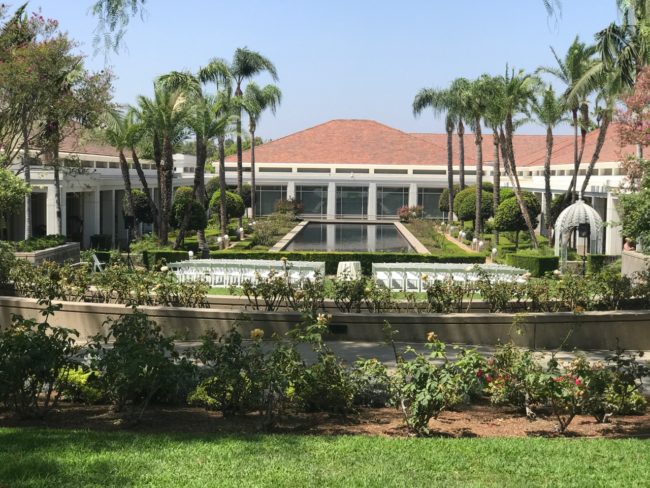 Back inside, we found ourselves in the East Room of the White House. Ok, it was a replica.
Back inside, we found ourselves in the East Room of the White House. Ok, it was a replica.
The crystal chandeliers are impressive … and heavy. These beautiful fixtures weigh 500 pounds apiece and are from the Czech Republic. They’re “strategically placed in the room to look infinite when viewed in front of the mirrors.”
The marble for the fireplace comes from an Italian quarry.
The Nixons were the first first family to have rock & roll and R&B acts (including the Guess Who and The Temptations) perform at the White House, and often these performances occurred in the East Room. The first group to play a concert at the White House were The Turtles, which is probably why Richard and Pat were so Happy Together.
The last thing we saw was a special exhibit on the 50th anniversary of the 1968 election. The slogan was, “This Time, Vote Like Your Whole World Depended On It.”
Interesting 1968 memorabilia covered the walls.
A poster of the most overrated movie of 1968 (right subscriber Tim?) and the famed photo of the Memphis motel where Dr. Martin Luther King Jr. was assassinated serve as Bookends for this Simon & Garfunkel album.
A couple of months later, in Los Angeles we awoke to this horrible realization.
The race for president that year had quite a cast of characters …
… and the Time Magazine covers tell the story of the participants.
Of course, Nixon came out victorious, perhaps due to those innovative “paper dresses” worn by some of the delegates at the 1968 Miami Beach Republican Convention.
Our 2-hour self-guided tour of the Richard Nixon Presidential Library had come to an end. 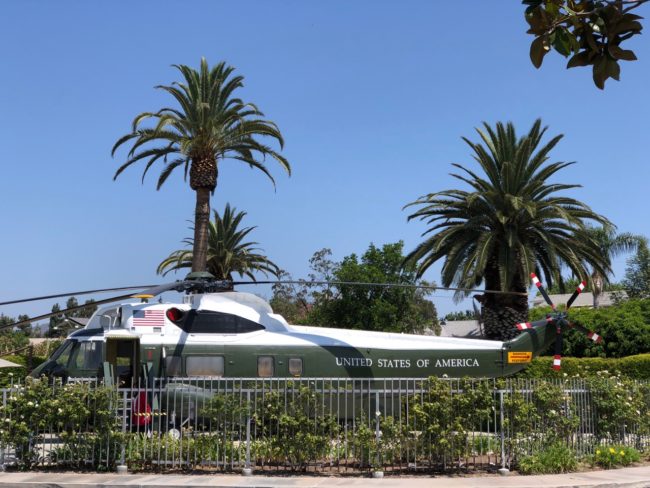
We took one last look at the helicopter from the parking lot.
Love him or loathe him, Richard Nixon is without a doubt one of the most interesting American politicians and public figures of the 20th century, which is why a visit to the Richard Nixon Presidential Library and Museum is a must for those with an interest in politics and history.
Richard Nixon Presidential Library & Museum
18001 Yorba Linda Blvd.
Yorba Linda, CA 92886
Hours: Monday – Saturday 10 a.m. – 5 p.m. (Opens at 11 a.m. on Sunday)
Parking: Free
www.nixonlibrary.gov/

